All reports
Friedreich's ataxia
·
Jan 17, 2025
Navigating Friedreich’s ataxia in the U.S.: a practical guide to support and financial planning
Essential resources and strategies for managing life with Friedreich’s ataxia
Reports are in beta and continually improving. They are not a substitute for professional medical advice. Please contact us to give feedback.

Stay informed
This report was published in our weekly newsletter and on our community page. Follow to stay up to date with the latest news and research relevant to your condition.
Introduction
Friedreich's Ataxia (FA) is a rare, inherited disease that causes progressive damage to the nervous system, affecting coordination, movement, and balance. While a diagnosis of FA can feel overwhelming, this guide aims to provide you with practical information and resources to help you navigate the challenges and plan for the future with confidence and hope. We will explore the progression of FA, the importance of building a care team, available support organizations and resources, financial planning strategies, and your legal rights.
Understanding Friedreich's Ataxia
FA is caused by a defect in the FXN gene, which leads to a deficiency of a protein called frataxin [1]. Frataxin plays a crucial role in the function of mitochondria, the energy-producing centers of cells. This deficiency primarily affects the nervous system, particularly the spinal cord and the cerebellum, which is responsible for coordinating movement and balance [2].
It's important to remember that FA is the most common form of hereditary ataxia in the United States, affecting about one in every 50,000 people [3]. Early diagnosis and intervention can be crucial in managing the condition and potentially limiting its severity [4].
Symptoms and Progression
The symptoms and progression of FA can vary significantly from person to person [1]. This variability is an important aspect of FA, and it's crucial to remember that your experience may differ from others with the condition.
Early Symptoms
The first noticeable symptom of FA is often ataxia, which refers to unsteadiness and difficulty with coordination [5]. You might experience:
Poor balance
Unsteadiness while walking, especially in the dark [6]
The need to maintain balance by positioning the feet widely apart [6]
Difficulty with fine motor skills (e.g., handwriting, buttoning clothes) [5]
Later Symptoms
As the condition progresses, other symptoms may emerge, such as:
Slurred speech (dysarthria)
Muscle weakness, particularly in the legs
Stiffness and cramping in the legs
Vision or hearing loss
Scoliosis (curvature of the spine) [2]
More than 95% of individuals with FA require a wheelchair by the age of 45 [7]. This highlights the progressive nature of the condition and the importance of planning for future mobility needs.
Building Your Care Team and Support Network
Managing FA involves a multidisciplinary approach. Assembling a team of healthcare professionals with expertise in different areas can provide comprehensive care and support. Equally important is establishing a strong support network to provide emotional and social support.
Care Team
Your care team might include the following professionals:
Neurologist: Assesses and manages neurological symptoms, such as ataxia, spasticity, and sensory loss.
Cardiologist: Monitors heart health, screens for cardiomyopathy and arrhythmias, and provides appropriate treatment.
Physical Therapist: Helps you maintain strength, flexibility, and balance, and adapt to changes in mobility.
Occupational Therapist: Assists with daily living activities and recommends adaptive equipment to promote independence.
Speech Therapist: Addresses speech difficulties (dysarthria) and swallowing problems (dysphagia).
Primary Care Provider: Provides ongoing general medical care and coordinates with specialists.
Endocrinologist: Manages diabetes if it develops as a complication of FA.
Orthopedic Surgeon: Addresses scoliosis or foot deformities if necessary.
Mental Health Professional: Provides counseling and support to cope with the emotional and psychological challenges of living with FA.
Regular checkups with your care team are essential to monitor your condition, manage symptoms, and adjust your treatment plan as needed.
Support Organizations and Resources
Connecting with others who understand the challenges of FA can provide invaluable support and encouragement. Several organizations offer resources, support groups, and advocacy for individuals with FA and their families:
Friedreich's Ataxia Research Alliance (FARA): FARA is a leading organization dedicated to research and support for FA. They offer a variety of resources, including educational materials, support groups, and information on clinical trials [12].
National Ataxia Foundation (NAF): NAF provides support, education, and research opportunities for individuals and families affected by ataxia, including FA. They offer resources, support groups, and advocate for policies that improve the lives of people with ataxia14. They also coordinate over 65 support groups across the United States, offering both in-person and virtual meeting options [15].
Muscular Dystrophy Association (MDA): MDA offers support and resources for individuals with neuromuscular disorders, including FA. They provide information, support groups, and assistance with equipment and services [17].
The FA Project: This organization provides financial assistance to people living with FA to help cover medical and adaptive equipment needs [15].
Friedreich's Ataxia Parents Group (FAPG): This is a free international email-based support group for parents and guardians of children with FA or other childhood-onset/undiagnosed ataxias [18].
FA Hangouts: These are virtual hangouts hosted by FARA ambassadors for adults with any kind of ataxia and their friends, family, or caregivers [18].
In addition to these organizations, the National Ataxia Foundation provides a list of online support groups and media recommendations (podcasts, blogs, books, websites) to provide additional support and information for patients and caregivers [19].
Financial Planning
Living with a chronic illness like FA involves not only addressing the physical symptoms but also planning for the financial and long-term support needs that may arise as the condition progresses. Planning for the future can help you manage expenses, access necessary support, and maintain financial stability.
Government Assistance Programs
Several government programs provide financial assistance to individuals with disabilities:
Supplemental Security Income (SSI): This program provides monthly payments to individuals with disabilities who have limited income and resources [20].
Social Security Disability Insurance (SSDI): For individuals with a work history, SSDI offers monthly benefits based on their earnings record [20].
Medicaid: This program provides healthcare coverage for individuals with limited income and resources [20].
Other Financial Resources
ABLE Accounts: Achieving a Better Life Experience (ABLE) accounts allow individuals with disabilities to save up to $100,000 without affecting their eligibility for SSI. These funds can be used for qualified disability-related expenses, such as housing, education, and healthcare [20].
State Pharmacy Assistance Programs: Many states offer programs to help eligible individuals pay for prescription medications [21].
Pharmaceutical Company Assistance Programs: Some pharmaceutical companies offer assistance in covering the cost of medications [21].
National Disability Institute (NDI): NDI offers financial education programs tailored for individuals with disabilities. They focus on promoting financial literacy, asset development, and economic empowerment [22].
Easterseals: This organization provides a range of services for individuals with disabilities, including financial literacy programs and resources aimed at helping individuals manage their finances and achieve independence [22].
Financial Planning Tools
NDI's Financial Resilience Center: This online hub provides resources and information to help people with disabilities build financial resilience and navigate challenging times [23].
U.S. Department of Labor's Secure Your Financial Future toolkit: This toolkit offers financial literacy tools and resources specifically for individuals with disabilities [24].
Tax Benefits
It's important to be aware of the tax benefits available to individuals with disabilities and their families. These include:
Disabled Dependent Tax Credit: Families who care for a person with a disability may qualify for a dependent care tax credit to help offset caregiving expenses [25].
Financial Planning Tips
Create a budget: Track your income and expenses to understand your financial situation and identify areas where you can save.
Plan for future needs: Consider the potential costs of medical care, adaptive equipment, and long-term support services.
Explore assistive technology: Assistive devices and technologies can help you maintain independence and manage daily tasks.
Seek financial counseling: A financial advisor with expertise in disability planning can provide personalized guidance and support.
Legal Rights
The Americans with Disabilities Act (ADA) is a federal civil rights law that prohibits discrimination against people with disabilities in various areas of public life, including employment, education, transportation, and public accommodations [30]. Under the ADA, you have the right to:
Equal employment opportunities: Employers cannot discriminate against you based on your disability and must provide reasonable accommodations to enable you to perform your job [31]. The U.S Equal Employment Opportunity Commission (EEOC) enforces Title I of the ADA, which covers employment rights [32].
Access to public services and accommodations: State and local governments must provide equal access to programs, services, and activities, such as public transportation, healthcare, and education [33].
Reasonable accommodations: Businesses and organizations that are open to the public must make reasonable accommodations to ensure that people with disabilities have equal access to their goods and services [34].
If you believe your rights under the ADA have been violated, you can file a complaint with the U.S. Department of Justice or the U.S. Equal Employment Opportunity Commission.
Conclusion
Living with Friedreich's Ataxia presents unique challenges, but with the right information, support, and planning, you can navigate these challenges and live a fulfilling life. Remember that you are not alone. By building a strong care team, connecting with support organizations, and utilizing available resources, you can take control of your health and well-being.
This guide has provided a comprehensive overview of FA, including its progression, available support, financial planning strategies, and your legal rights. We encourage you to discuss this information with your healthcare provider and explore the resources mentioned to develop a personalized plan that meets your individual needs.
Maintaining a healthy lifestyle, including regular exercise and a balanced diet, can also play a role in managing FA and improving your overall well-being [35]. While research into potential treatments continues, it's important to approach the use of supplements like idebenone, CoQ10, and vitamin E with a balanced perspective, understanding both their potential benefits and limitations [35].
Above all, remember that there is hope. Advances in research and treatment, along with the support of your care team and community, can empower you to live a full and meaningful life with FA. We encourage you to connect with support organizations, participate in research if you are interested, and advocate for your rights to ensure that you have the resources and support you need to thrive.
References
1. Friedreich's Ataxia (FRDA) - Diseases - Muscular Dystrophy Association, https://www.mda.org/disease/friedreichs-ataxia
2. Friedreich Ataxia | National Institute of Neurological Disorders and Stroke, https://www.ninds.nih.gov/health-information/disorders/friedreich-ataxia
3. FDA approves first treatment for Friedreich's ataxia, https://www.fda.gov/drugs/news-events-human-drugs/fda-approves-first-treatment-friedreichs-ataxia
4. Friedreich's Ataxia | Johns Hopkins Medicine, https://www.hopkinsmedicine.org/health/conditions-and-diseases/friedreich-ataxia
5. Friedreich's Ataxia | Children's Hospital of Philadelphia, https://www.chop.edu/conditions-diseases/friedreichs-ataxia
6. Friedreich's ataxia - Better Health Channel, https://www.betterhealth.vic.gov.au/health/conditionsandtreatments/friedreichs-ataxia
7. Friedreich Ataxia Follow-up: Prognosis, https://emedicine.medscape.com/article/1150420-followup
8. Friedreich Ataxia - Biogen, https://www.biogen.com/disease-areas/friedreich-ataxia.html
9. Prognosis of Friedreich's ataxia, https://friedreichsataxianews.com/prognosis-of-friedreichs-ataxia/
10. Friedreich's Ataxia: What It Is, Symptoms & Treatment - Cleveland Clinic, https://my.clevelandclinic.org/health/diseases/23084-friedreichs-ataxia-fa
11. Managing FA - Friedreich's Ataxia Research Alliance, https://www.curefa.org/understanding-fa/managing-fa/
12. Friedreich's Ataxia Research Alliance (Fara) - National Organization for Rare Disorders, https://rarediseases.org/organizations/friedreichs-ataxia-research-alliance-fara/
13. Friedreich's Ataxia Research Alliance: FARA, https://www.curefa.org/
14. National Ataxia Foundation - National Organization for Rare Disorders, https://rarediseases.org/organizations/national-ataxia-foundation/
15. Ataxia Resources: Hereditary, Friedreich's, and Sporadic, https://www.disabilityresources.org/ataxia.html
16. friedreichsataxianews.com, https://friedreichsataxianews.com/friedreichs-ataxia-treatment/#:~:text=The%20National%20Ataxia%20Foundation%20offers,support%20groups%20also%20are%20available.
17. Advocacy Partners - Friedreich's Ataxia News, https://friedreichsataxianews.com/advocacy-partners/
18. Connect - Friedreich's Ataxia Research Alliance, https://www.curefa.org/get-involved/connect/
19. Help and Resources for Caregivers of Loved Ones with Friedreich's Ataxia - Healthline, https://www.healthline.com/health/resources-caregivers-friedreichs-ataxia
20. Financial Planning for Individuals with I/DD: A Complete Guide - Person Centered Services, https://pcsofca.com/blog/financial-planning-idd/
21. Friedreich's ataxia support groups and resources, https://friedreichsataxianews.com/friedreichs-ataxia-support-groups-and-resources/
22. Money Management for People with Disabilities - Center for Financial Capability, https://cfc.unm.edu/resources/money-management-for-people-with-disabilities.html
23. Financial Resources for People with Disabilities, https://www.nationaldisabilityinstitute.org/financial-resilience-center/
24. Secure your financial future: Tools for people with disabilities - DOL Blog, https://blog.dol.gov/2024/10/29/secure-your-financial-future-tools-for-people-with-disabilities
25. 8 Financial Planning Tips for People with Disabilities - Synchrony Bank, https://www.synchrony.com/blog/banking/financial-planning-tips-people-with-disabilities
26. Consensus clinical management guidelines for Friedreich ataxia - PMC - PubMed Central, https://pmc.ncbi.nlm.nih.gov/articles/PMC4280001/
27. Friedreich's ataxia: major trial readouts and regulatory events to watch in 2023, https://www.clinicaltrialsarena.com/features/friedreichs-ataxia-trials/
28. Living with Friedreich's ataxia, https://friedreichsataxianews.com/living-with-friedreichs-ataxia/
29. Pharmacological treatments for Friedreich ataxia - PMC - PubMed Central, https://pmc.ncbi.nlm.nih.gov/articles/PMC6457808/
30. Introduction to the Americans with Disabilities Act | ADA.gov, https://www.ada.gov/topics/intro-to-ada/
31. Know Your Rights | Disability Rights - ACLU, https://www.aclu.org/know-your-rights/disability-rights
32. Americans with Disabilities Act | U.S. Department of Labor, https://www.dol.gov/general/topic/disability/ada
33. Guide to Disability Rights Laws - ADA.gov, https://www.ada.gov/resources/disability-rights-guide/
34. What is the Americans with Disabilities Act (ADA)? - ADA National Network, https://adata.org/learn-about-ada
35. Where to Begin? - Friedreich's Ataxia Research Alliance, https://www.curefa.org/wp-content/uploads/2024/03/Newly-Diagnosed-Adults.pdf

Gaucher disease
·
Inclusion of Gaucher disease in newborn screening panels across the U.S.
Apr 9, 2025

Hemophilia
·
Qfitlia: A breakthrough in hemophilia treatment
Apr 3, 2025

Multiple myeloma
·
Navigating clinical trials in multiple myeloma
Apr 2, 2025

Gene and cell therapy
·
An introduction to cell therapy
Mar 25, 2025

Gene and cell therapy
·
An introduction to gene therapy
Mar 19, 2025
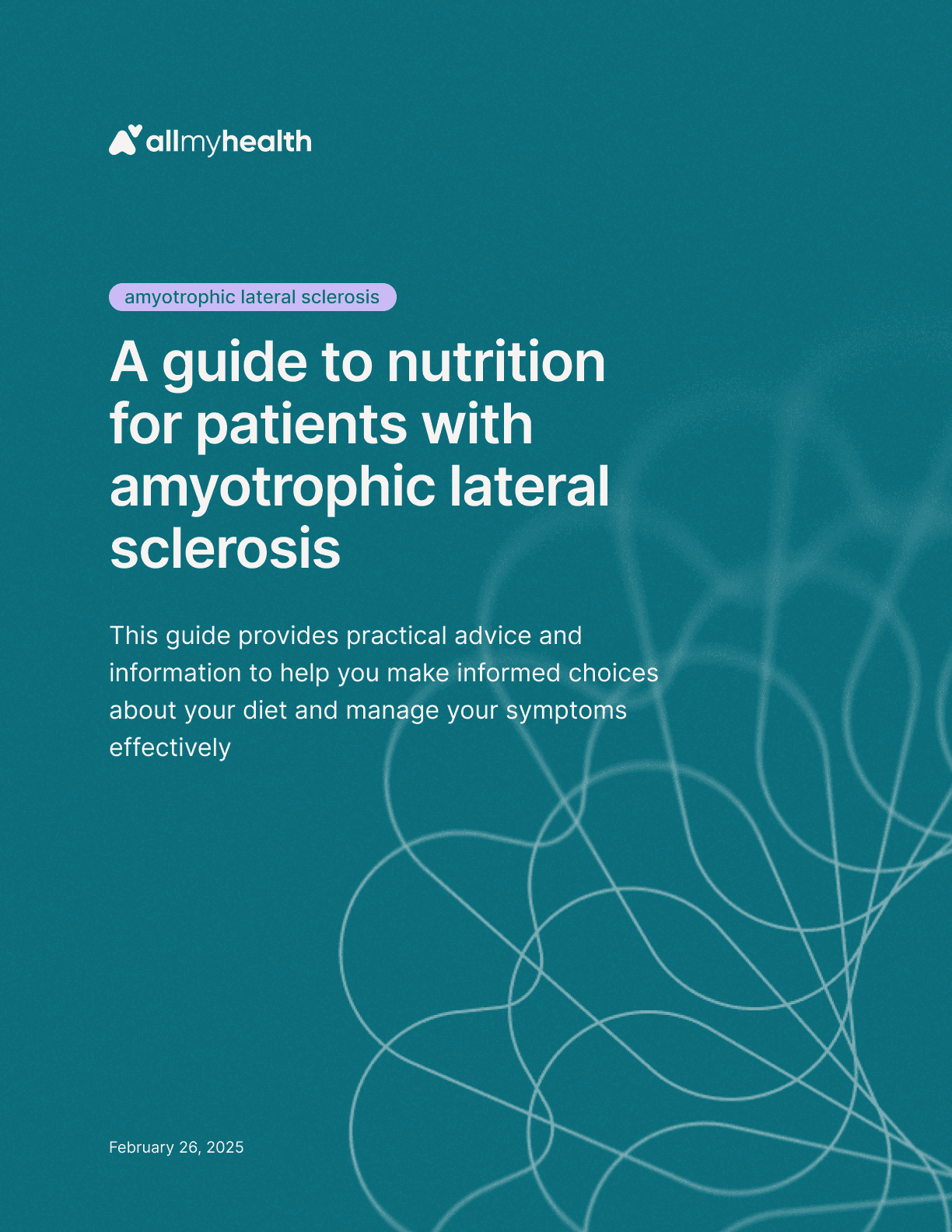
Amyotrophic lateral sclerosis
·
A guide to nutrition for patients with amyotrophic lateral sclerosis
Feb 26, 2025
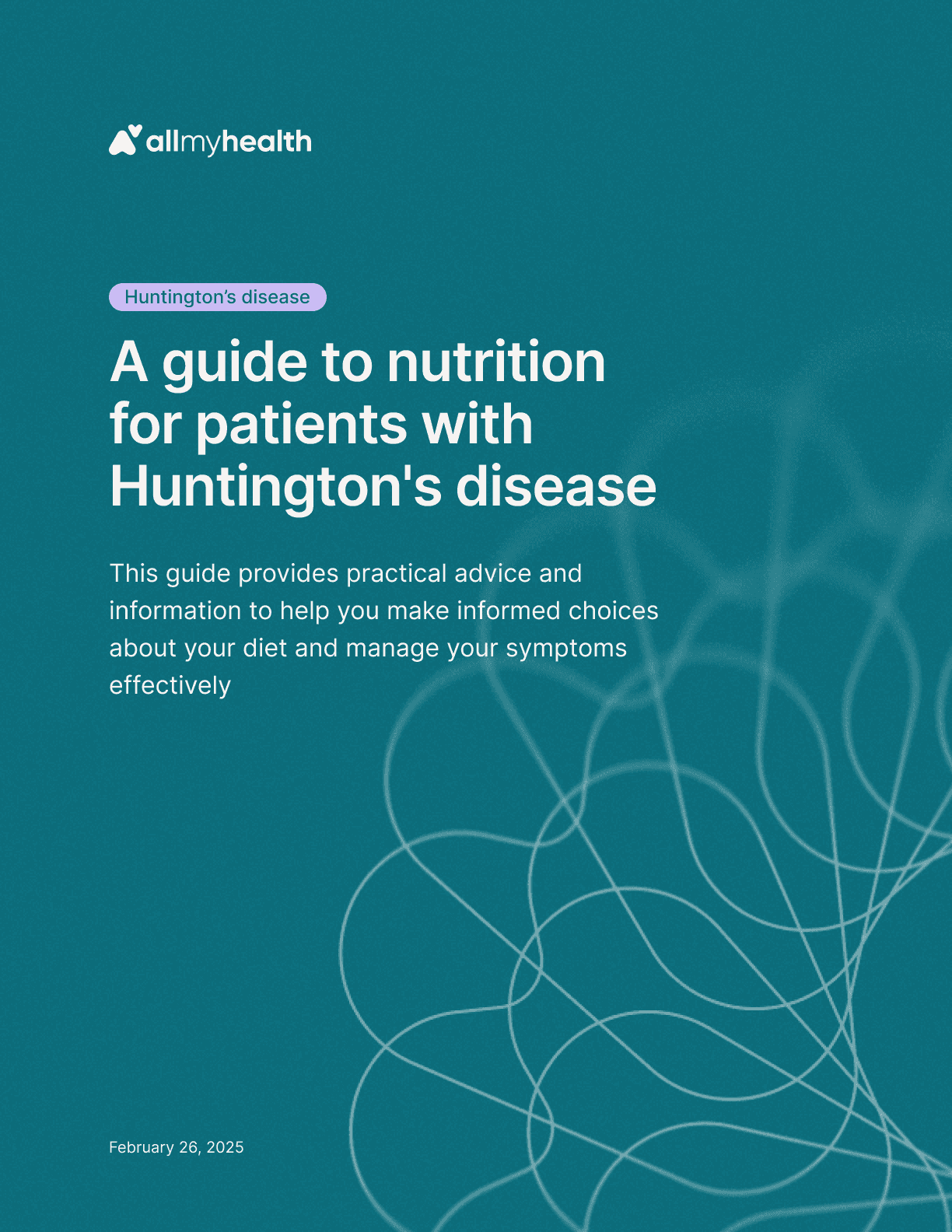
Huntington's disease
·
A guide to nutrition for patients with Huntington's disease
Feb 26, 2025

Spinal muscular atrophy
·
A guide to nutrition for patients with spinal muscular atrophy
Feb 26, 2025
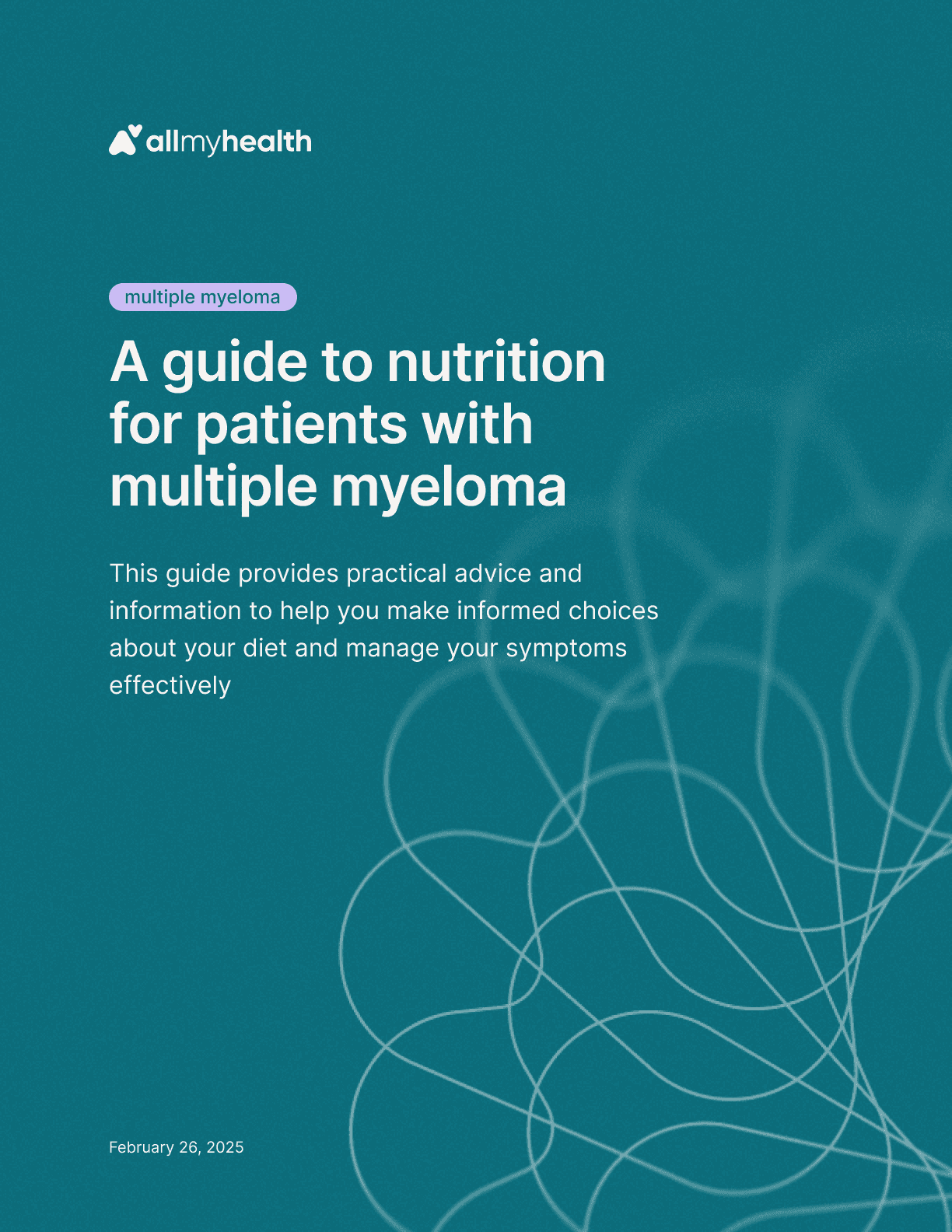
Multiple myeloma
·
A guide to nutrition for patients with multiple myeloma
Feb 26, 2025
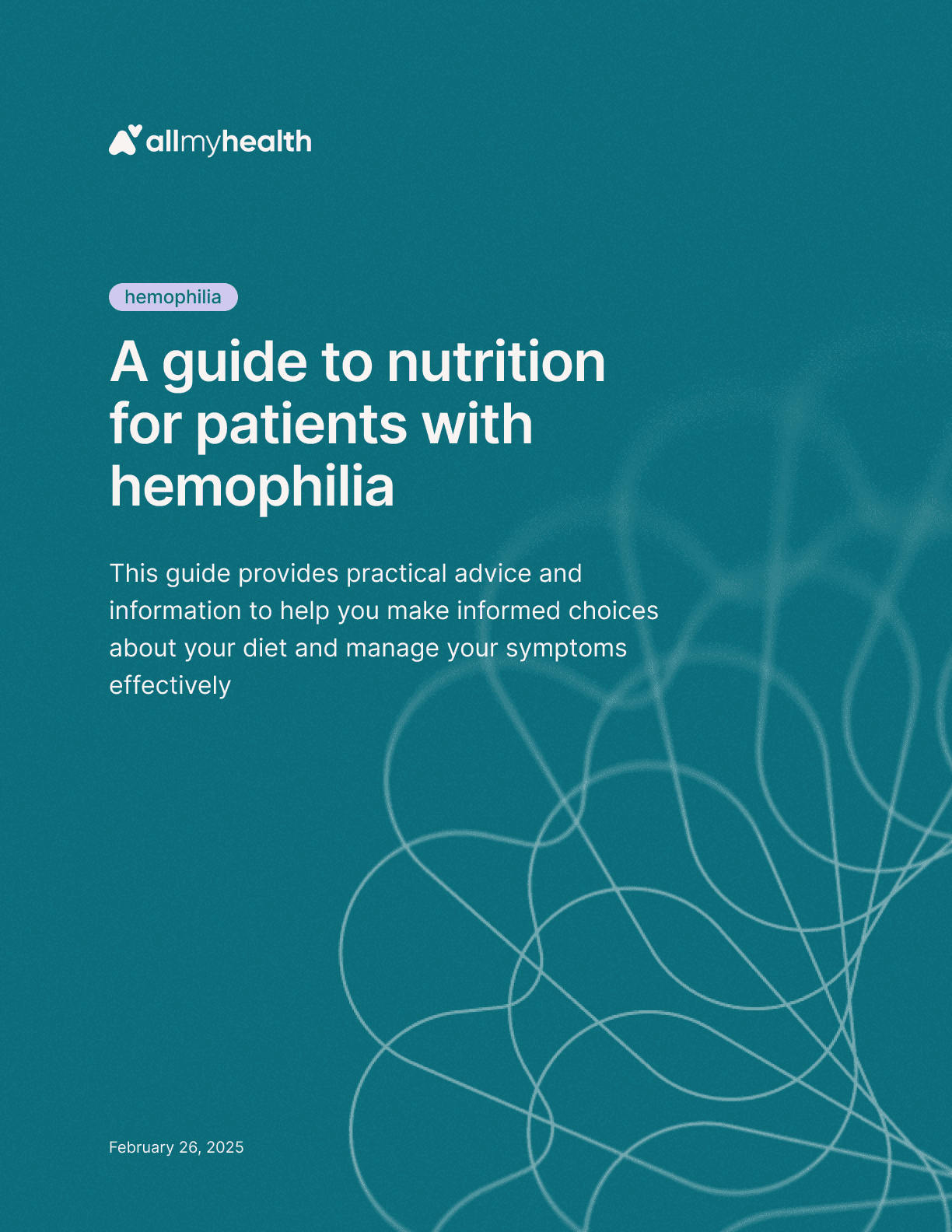
Hemophilia
·
A guide to nutrition for patients with hemophilia
Feb 26, 2025
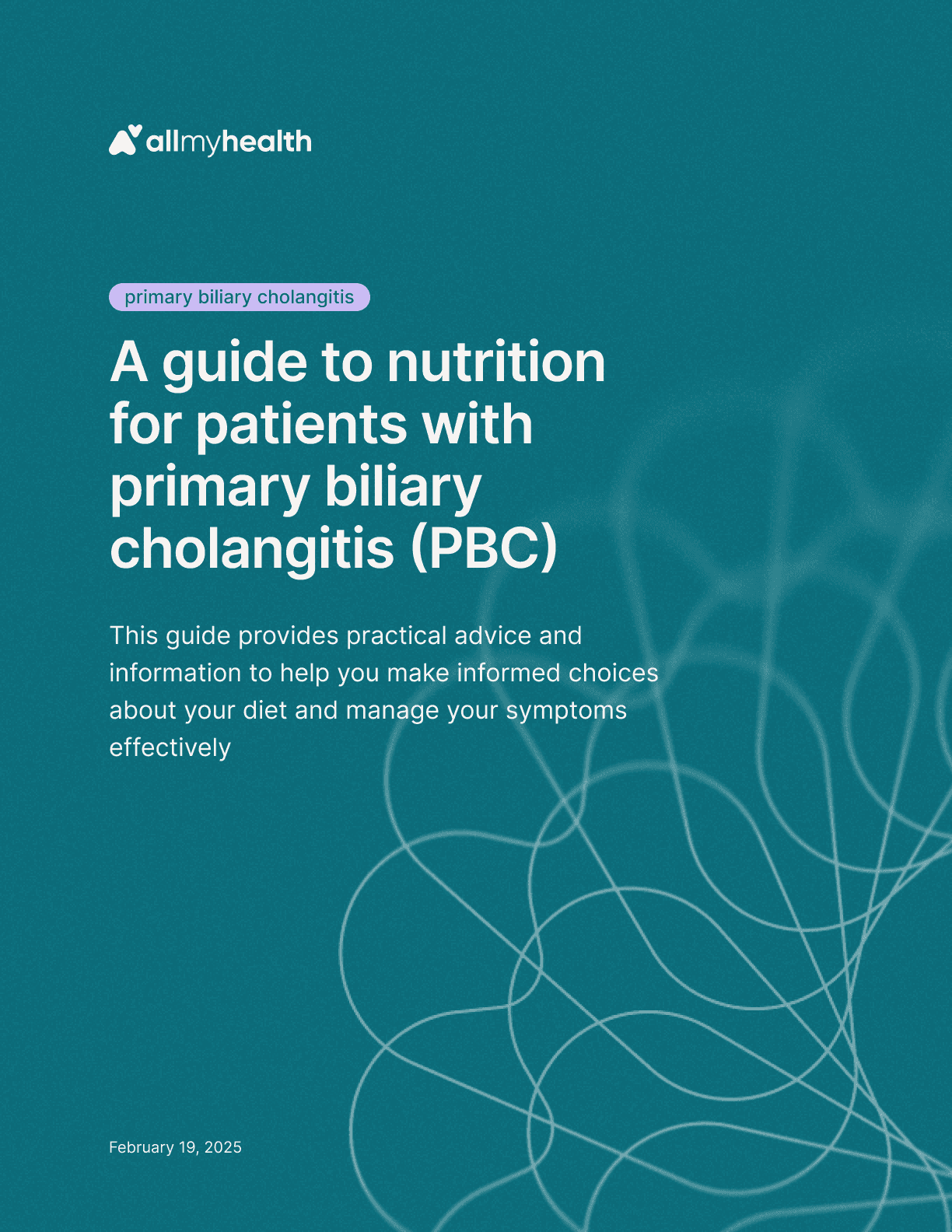
Primary biliary cholangitis
·
A guide to nutrition for patients with primary biliary cholangitis (PBC)
Feb 19, 2025
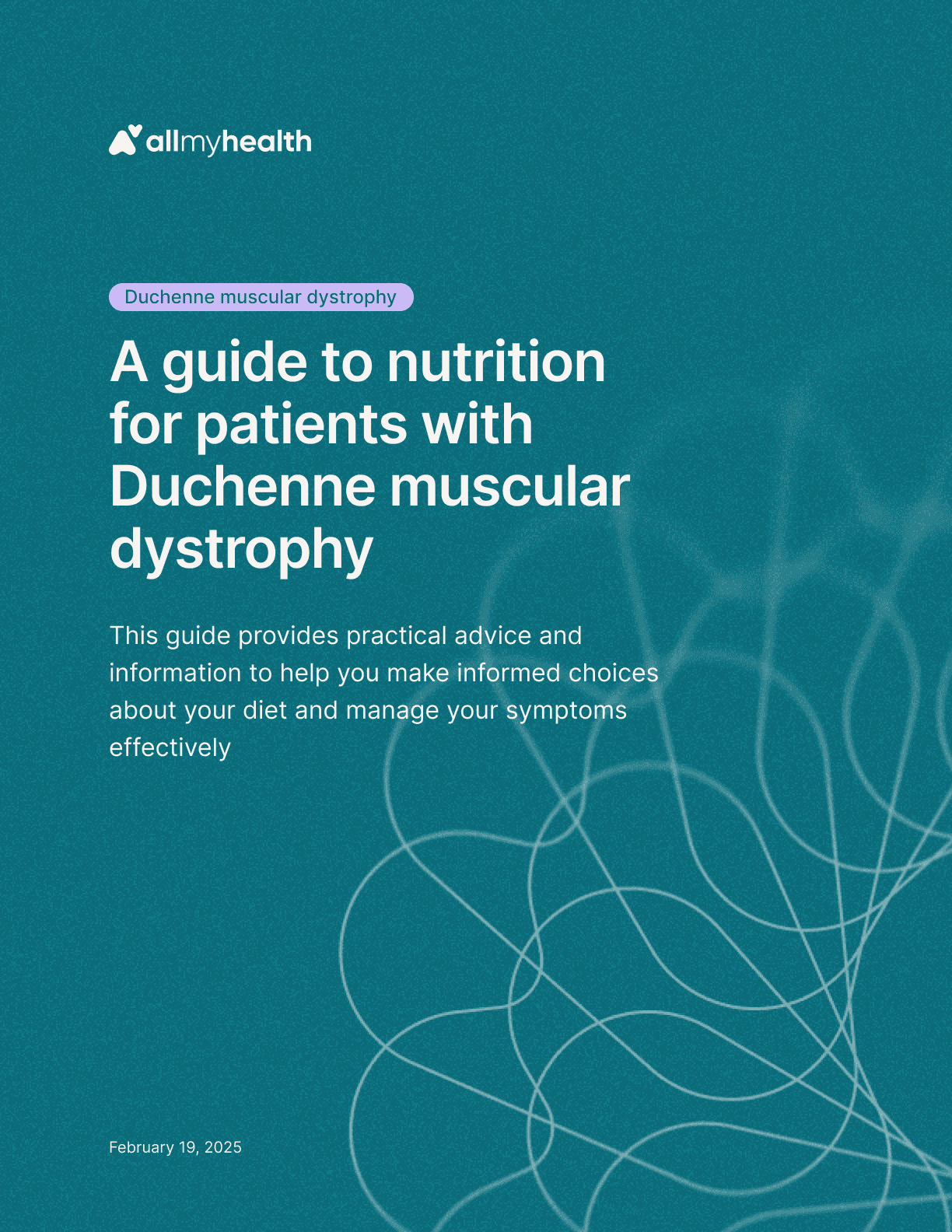
Duchenne muscular dystrophy
·
A guide to nutrition for patients with Duchenne muscular dystrophy
Feb 19, 2025
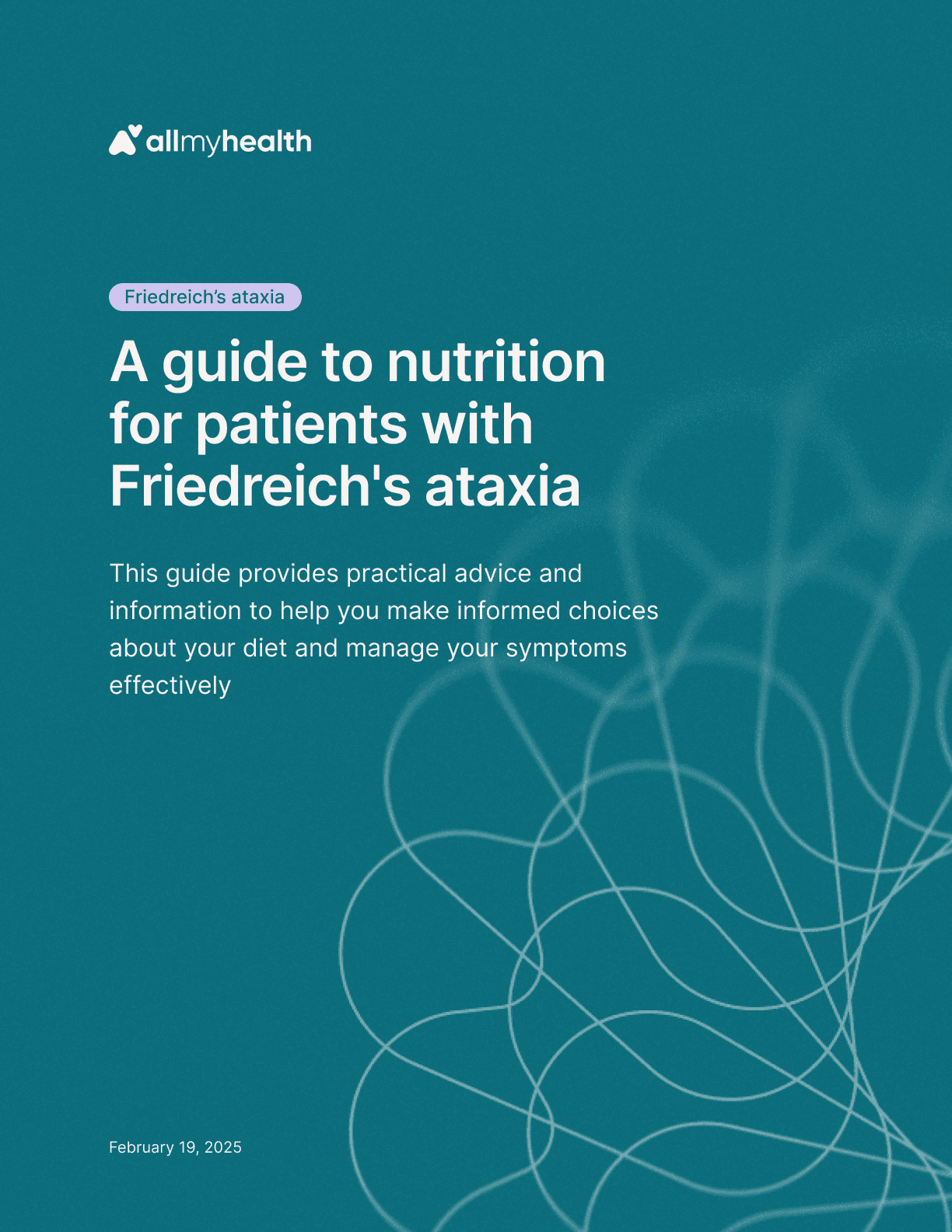
Friedreich's ataxia
·
A guide to nutrition for patients with Friedreich's ataxia
Feb 19, 2025
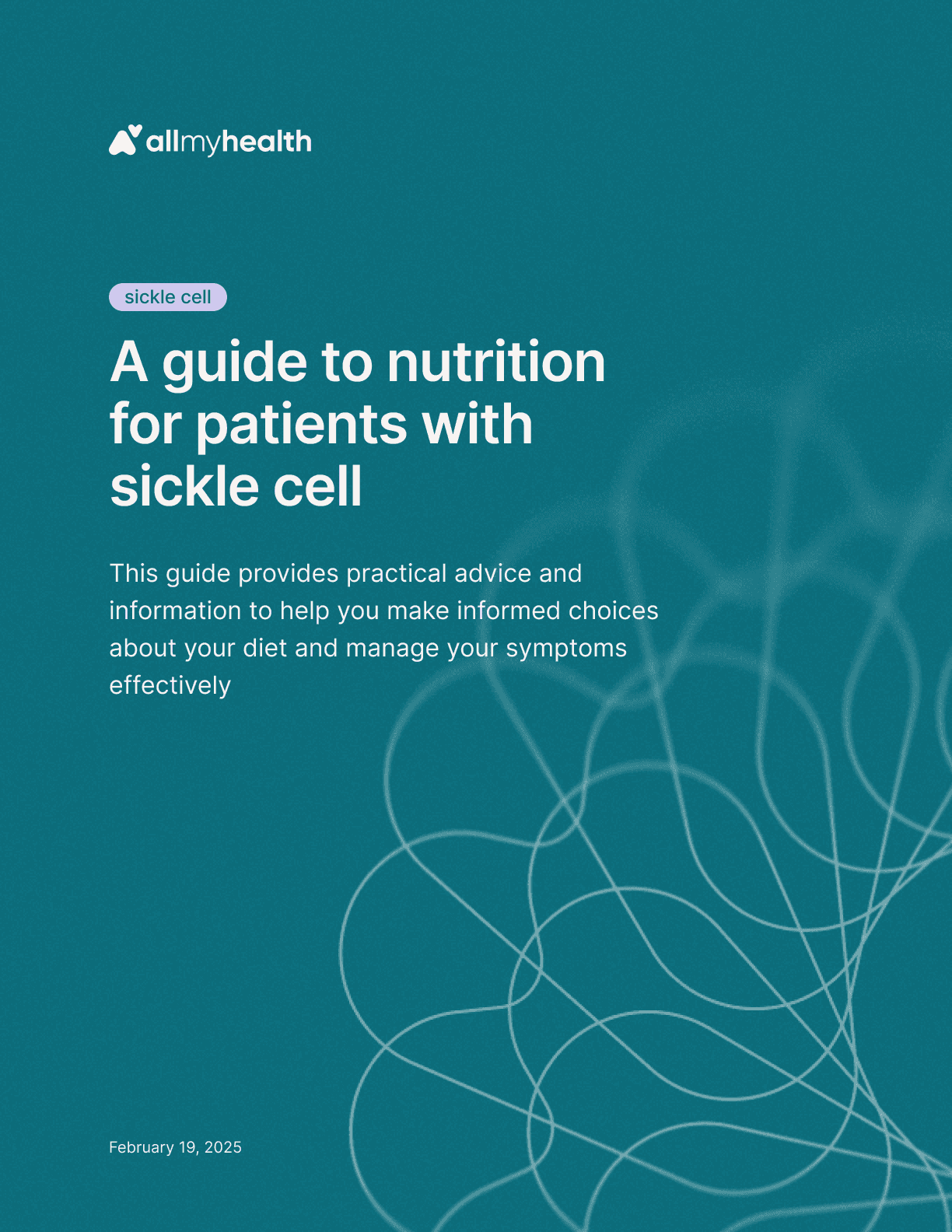
Sickle cell
·
A guide to nutrition for patients with sickle cell
Feb 19, 2025

Mantle cell lymphoma
·
A guide to nutrition for patients with mantle cell lymphoma
Feb 19, 2025
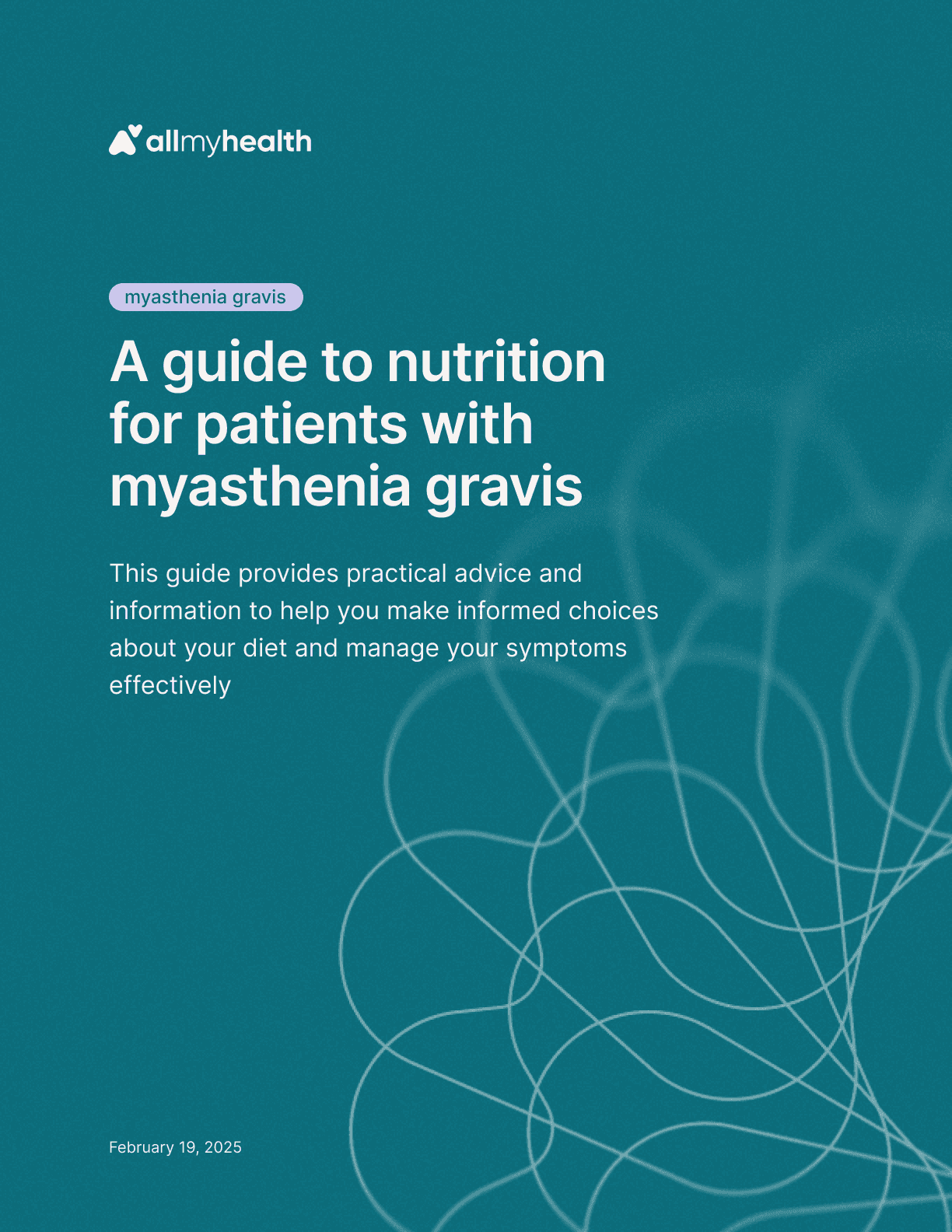
Myasthenia gravis
·
A guide to nutrition for patients with myasthenia gravis
Feb 19, 2025
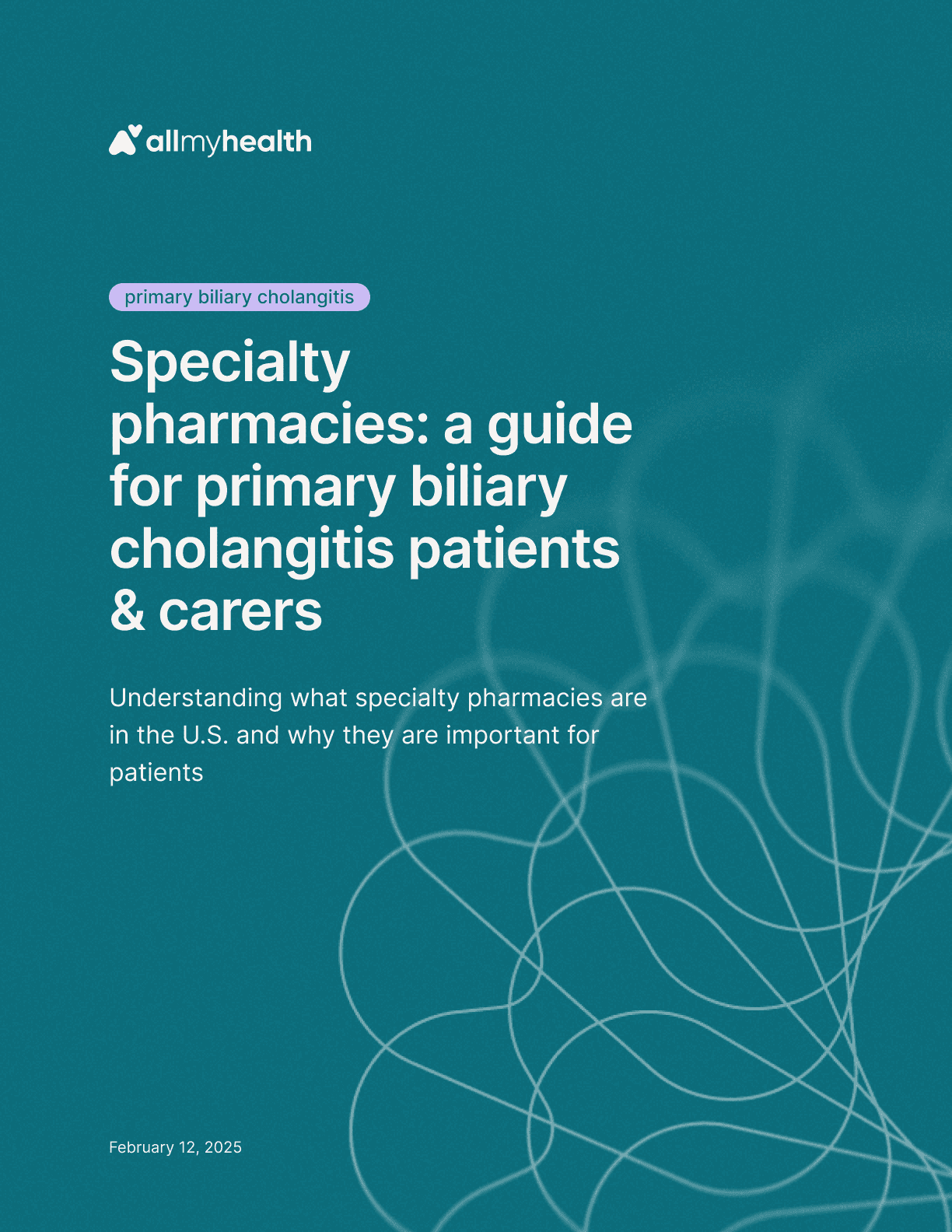
Primary biliary cholangitis
·
Specialty pharmacies: a guide for primary biliary cholangitis patients & carers
Feb 12, 2025
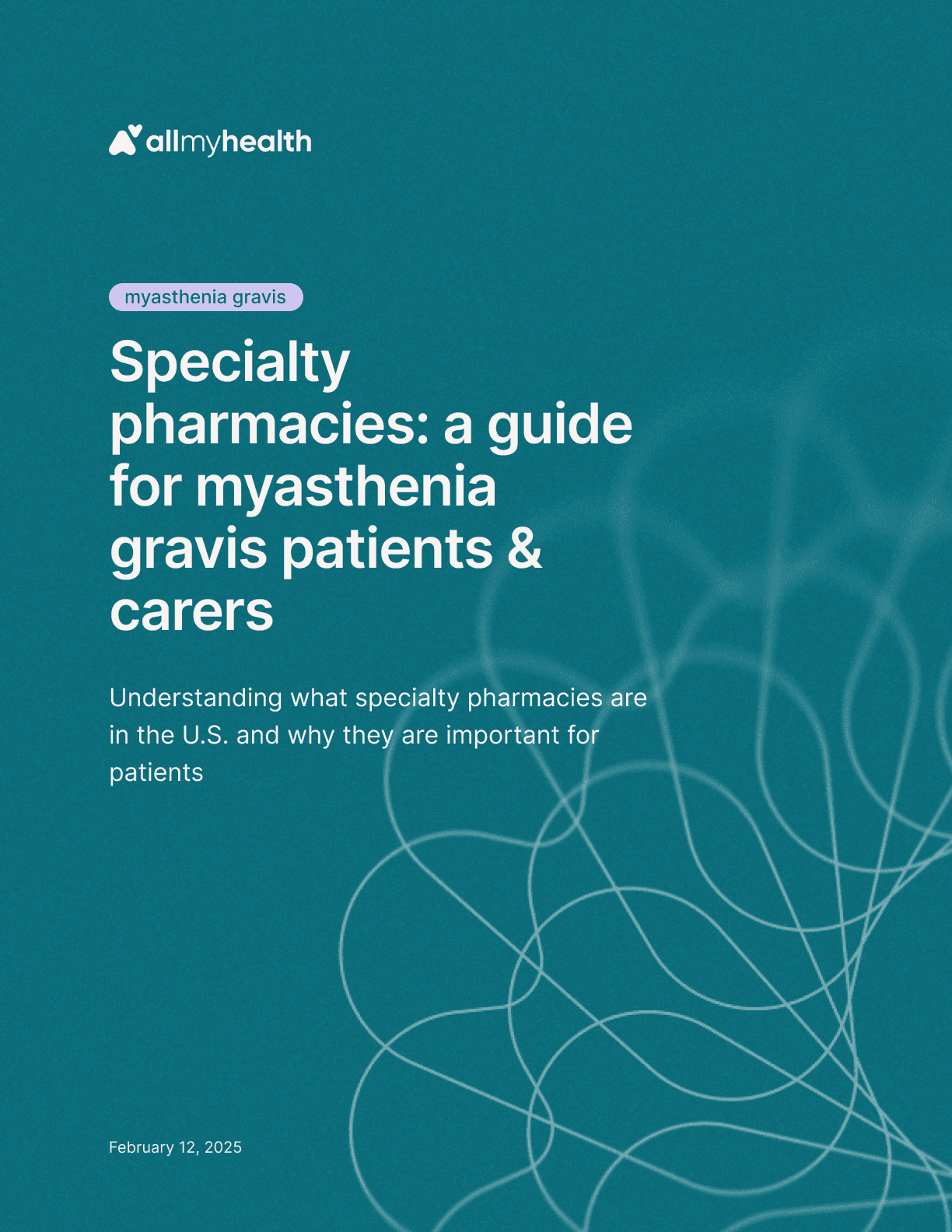
Myasthenia gravis
·
Specialty pharmacies: a guide for myasthenia gravis patients & carers
Feb 12, 2025
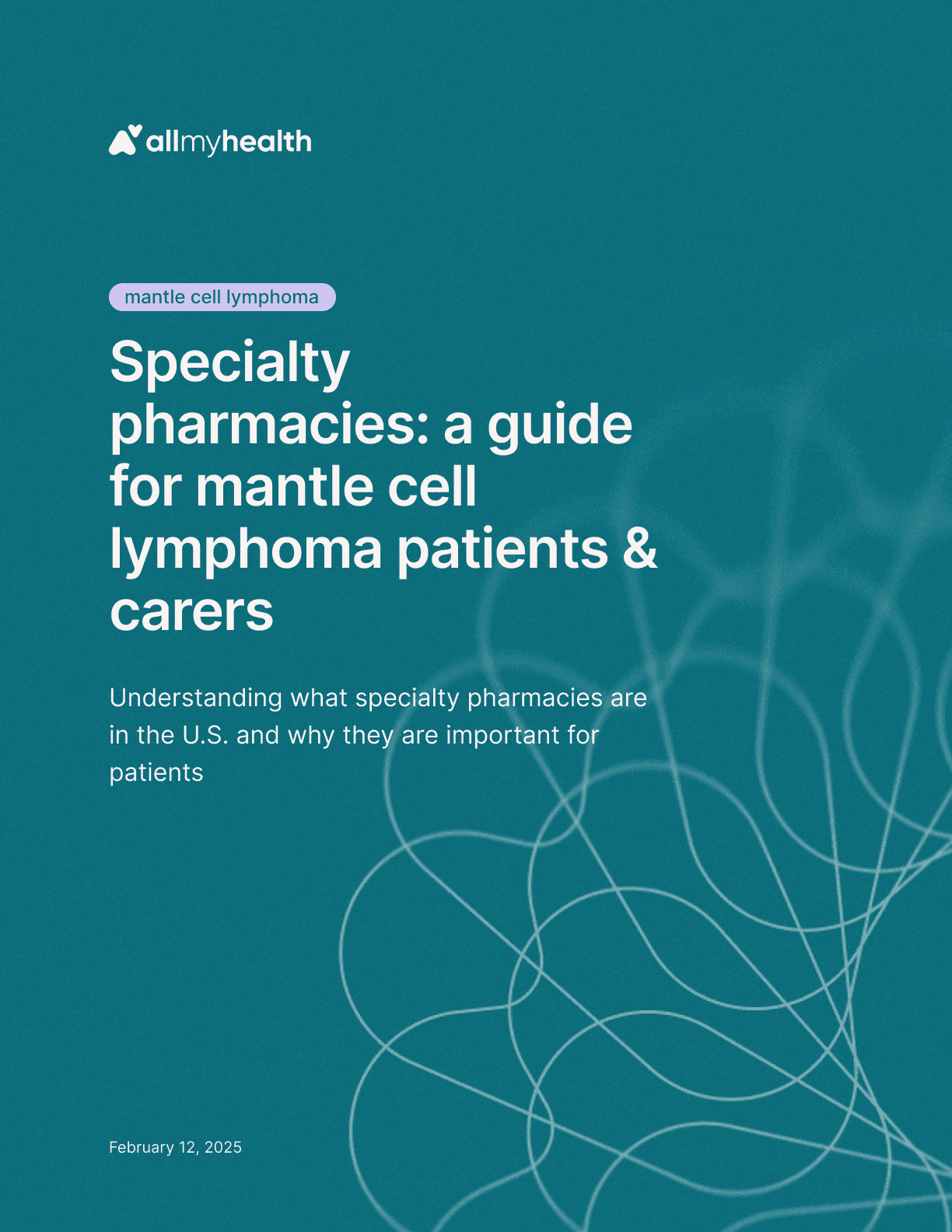
Mantle cell lymphoma
·
Specialty pharmacies: a guide for mantle cell lymphoma patients & carers
Feb 12, 2025
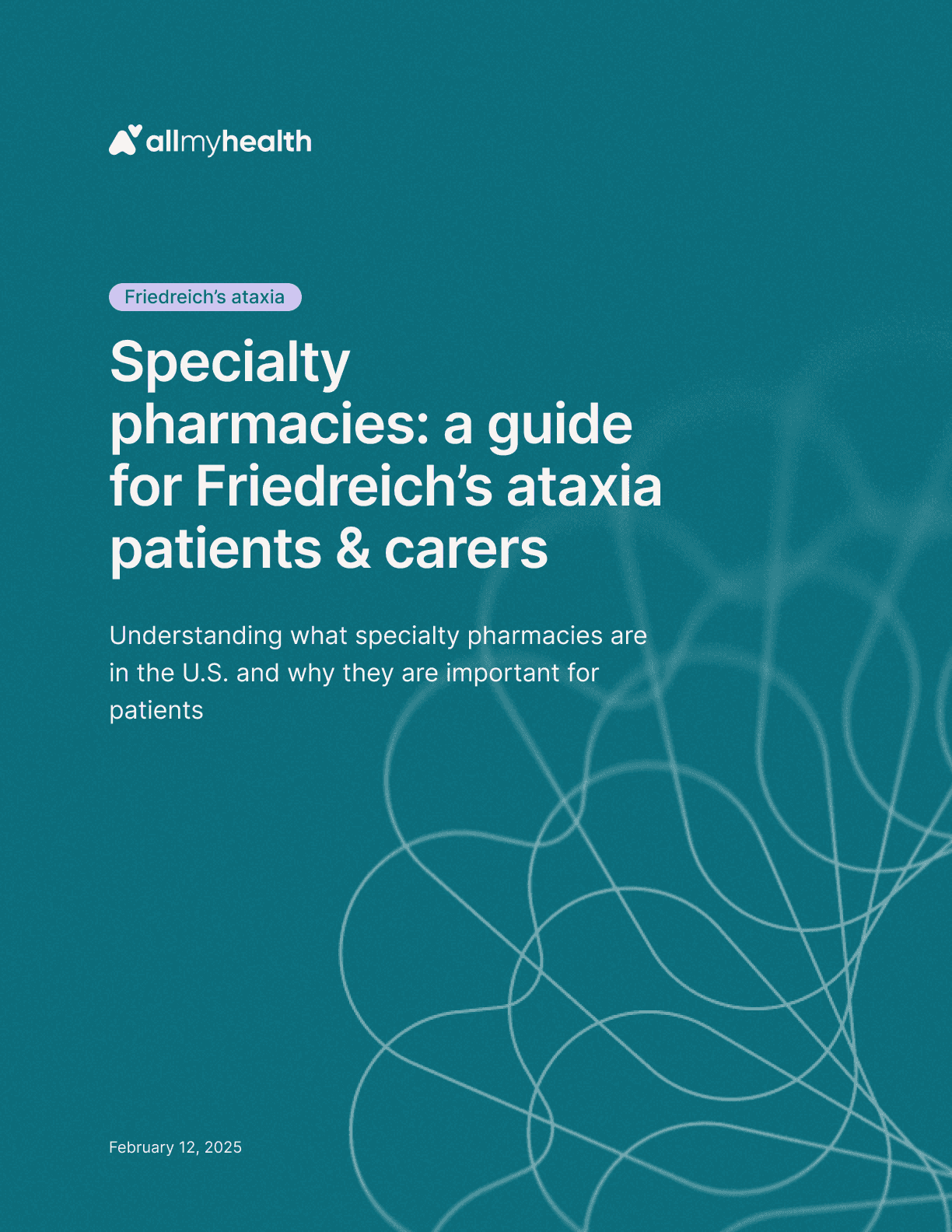
Friedreich's ataxia
·
Specialty pharmacies: a guide for Friedreich’s ataxia patients & carers
Feb 12, 2025
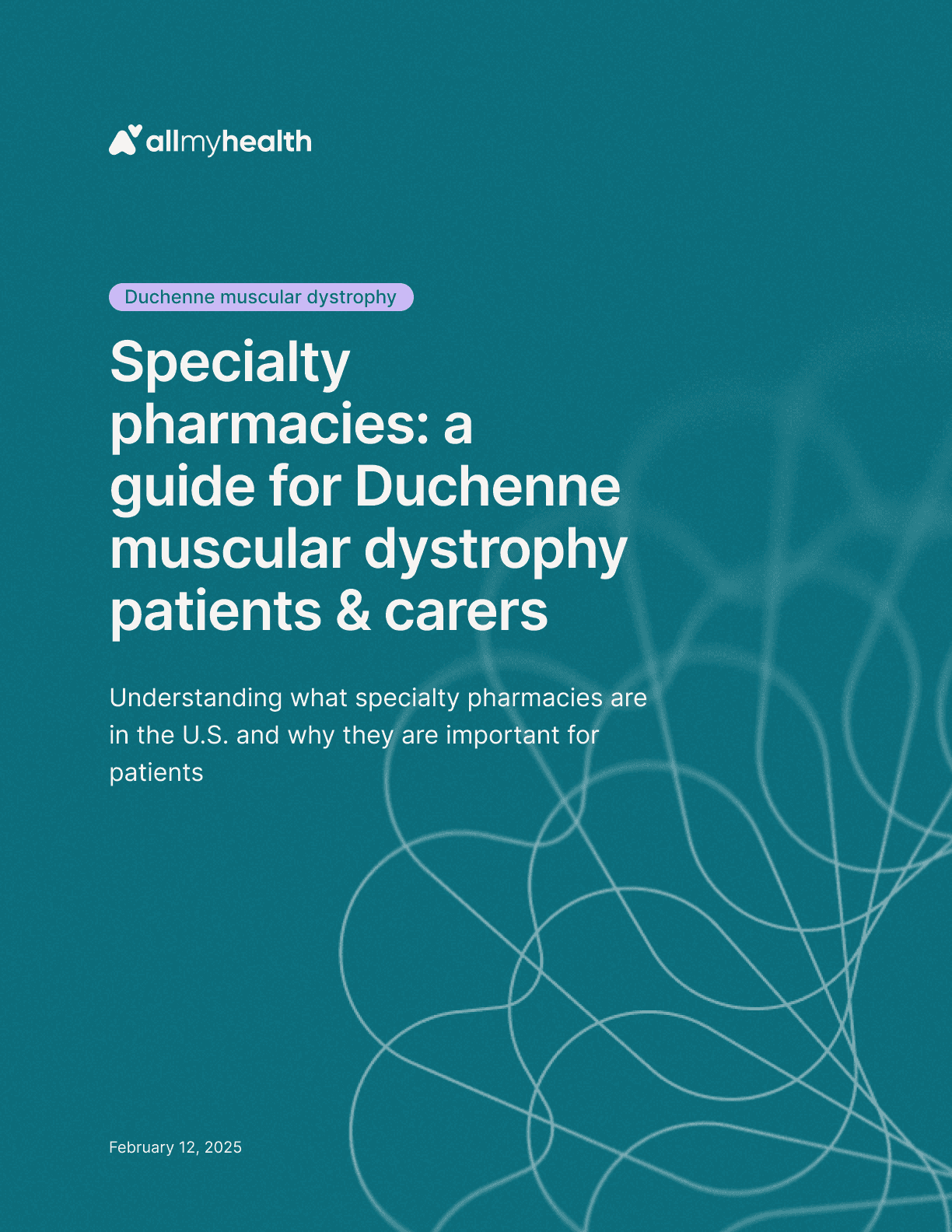
Duchenne muscular dystrophy
·
Specialty pharmacies: a guide for Duchenne muscular dystrophy patients & carers
Feb 12, 2025

Spinal muscular atrophy
·
Specialty pharmacies: a guide for SMA patients & carers
Feb 6, 2025
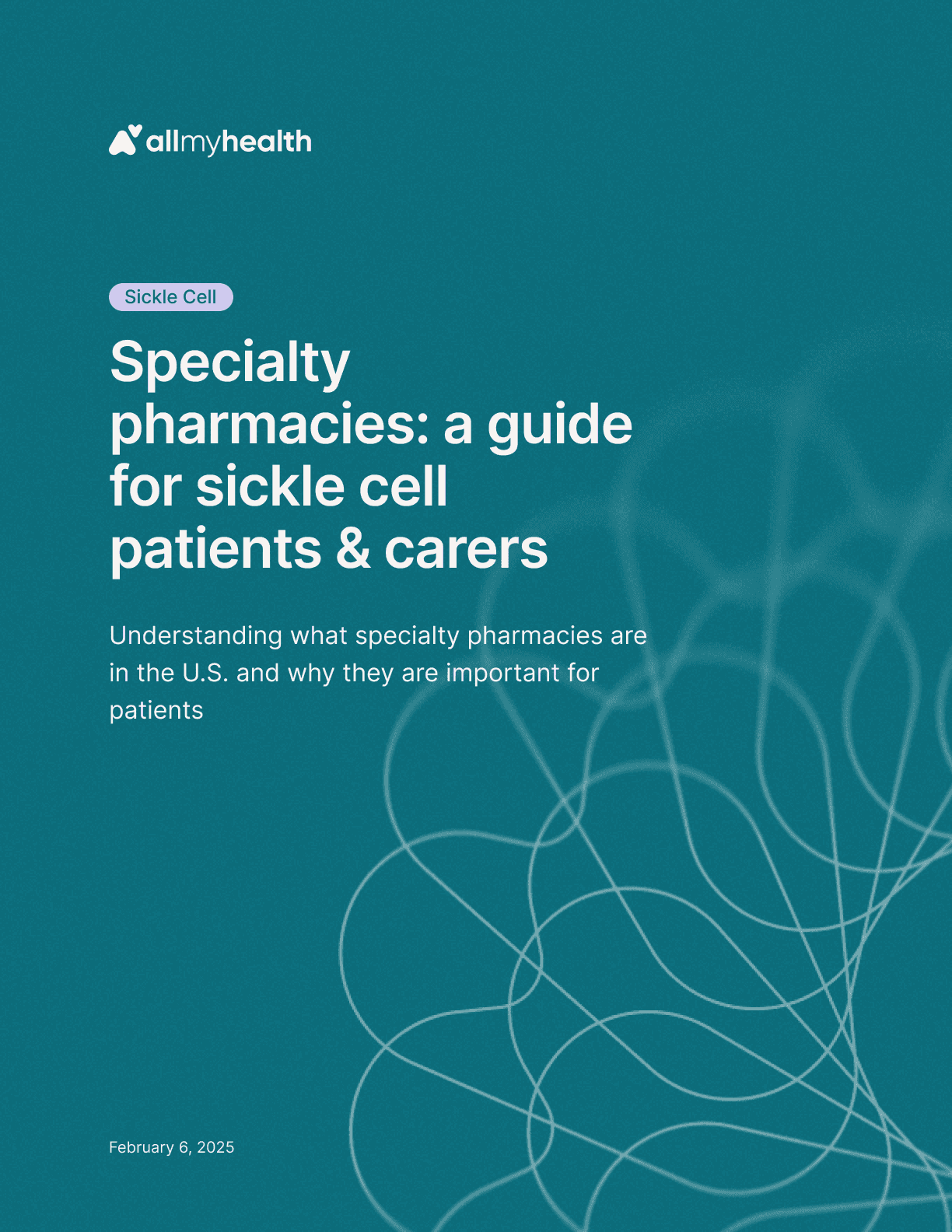
Sickle cell
·
Specialty pharmacies: a guide for sickle cell patients & carers
Feb 6, 2025
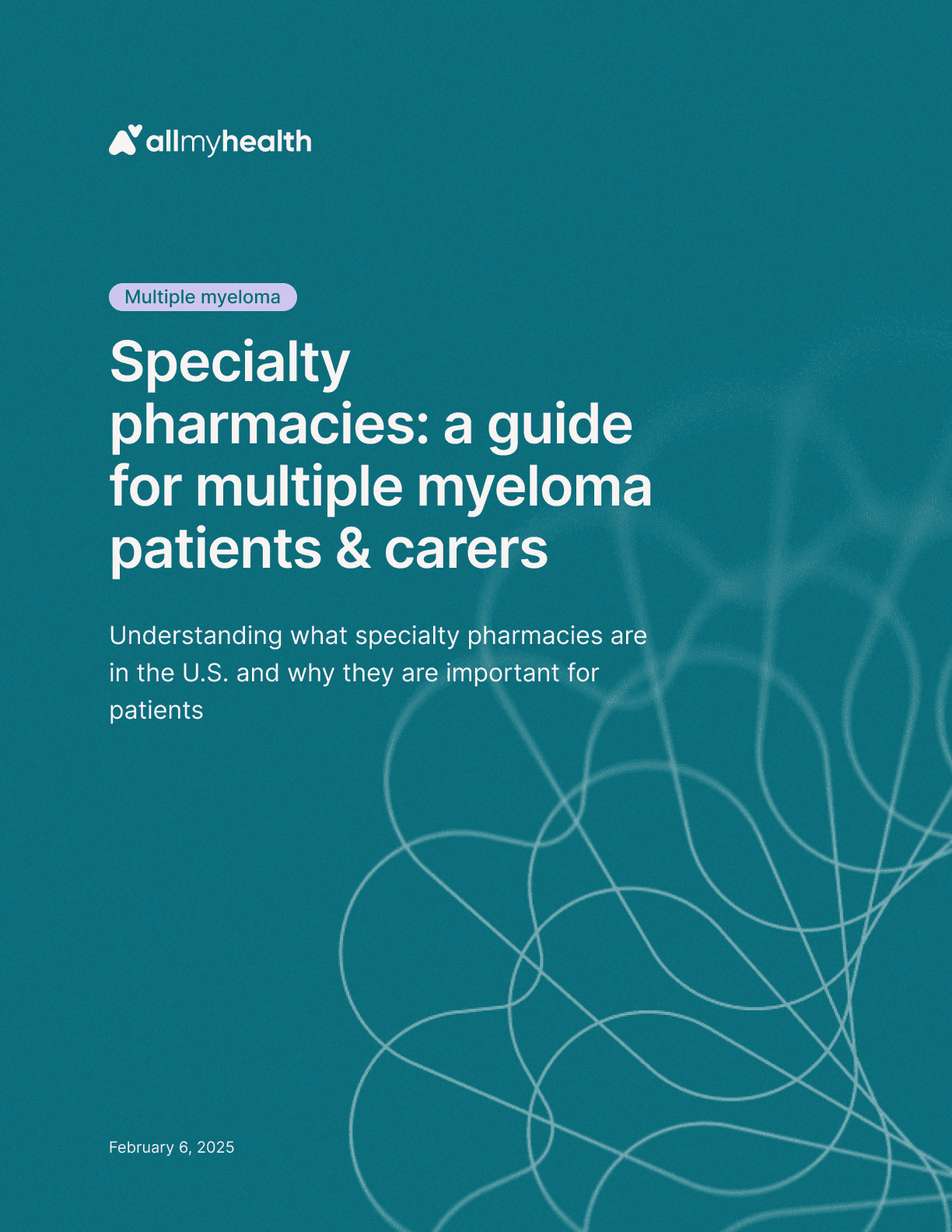
Multiple myeloma
·
Specialty pharmacies: a guide for multiple myeloma patients & carers
Feb 6, 2025
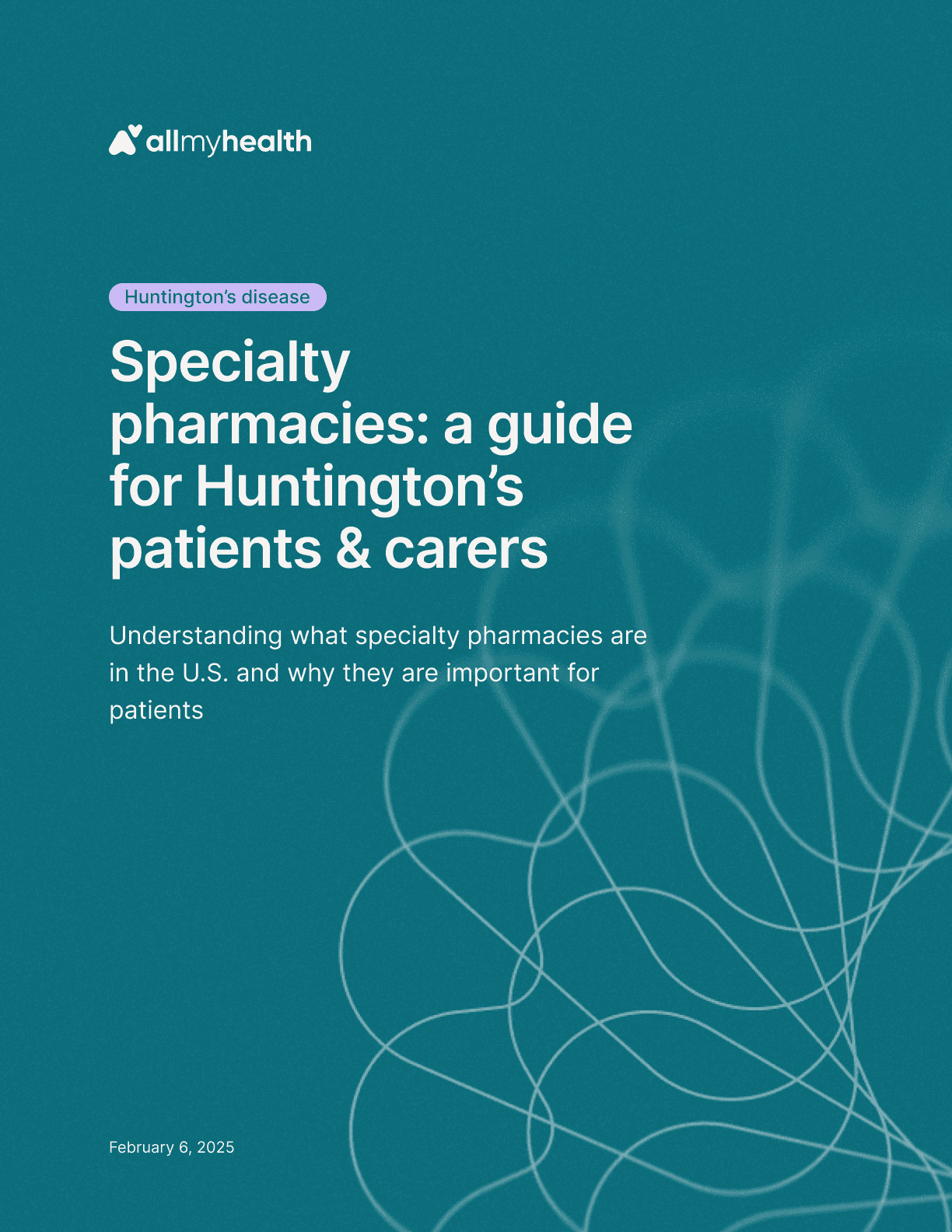
Huntington's disease
·
Specialty pharmacies: a guide for Huntington’s disease patients & carers
Feb 6, 2025
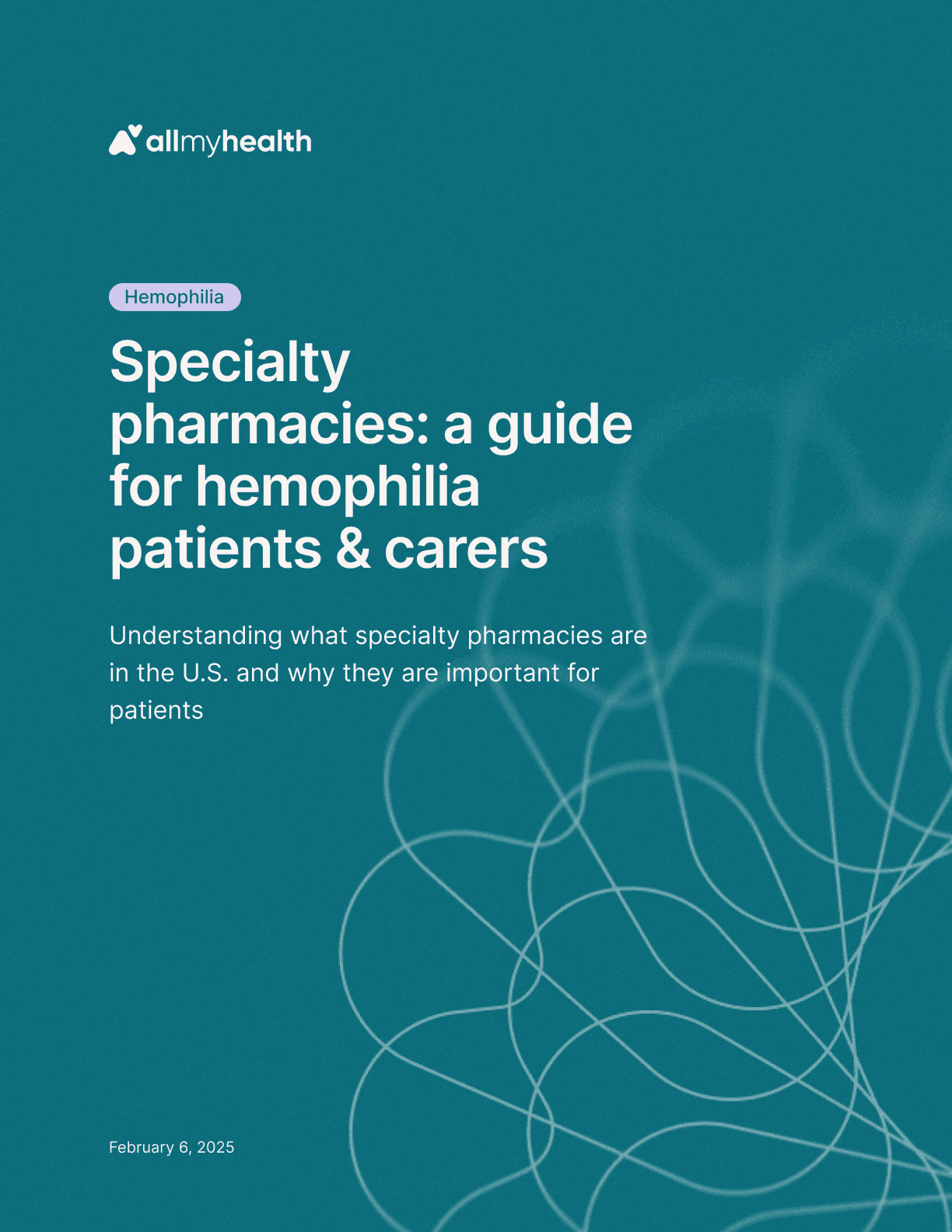
Hemophilia
·
Specialty pharmacies: a guide for hemophilia patients & carers
Feb 6, 2025

Amyotrophic lateral sclerosis
·
Specialty pharmacies: a guide for ALS patients & carers
Feb 6, 2025
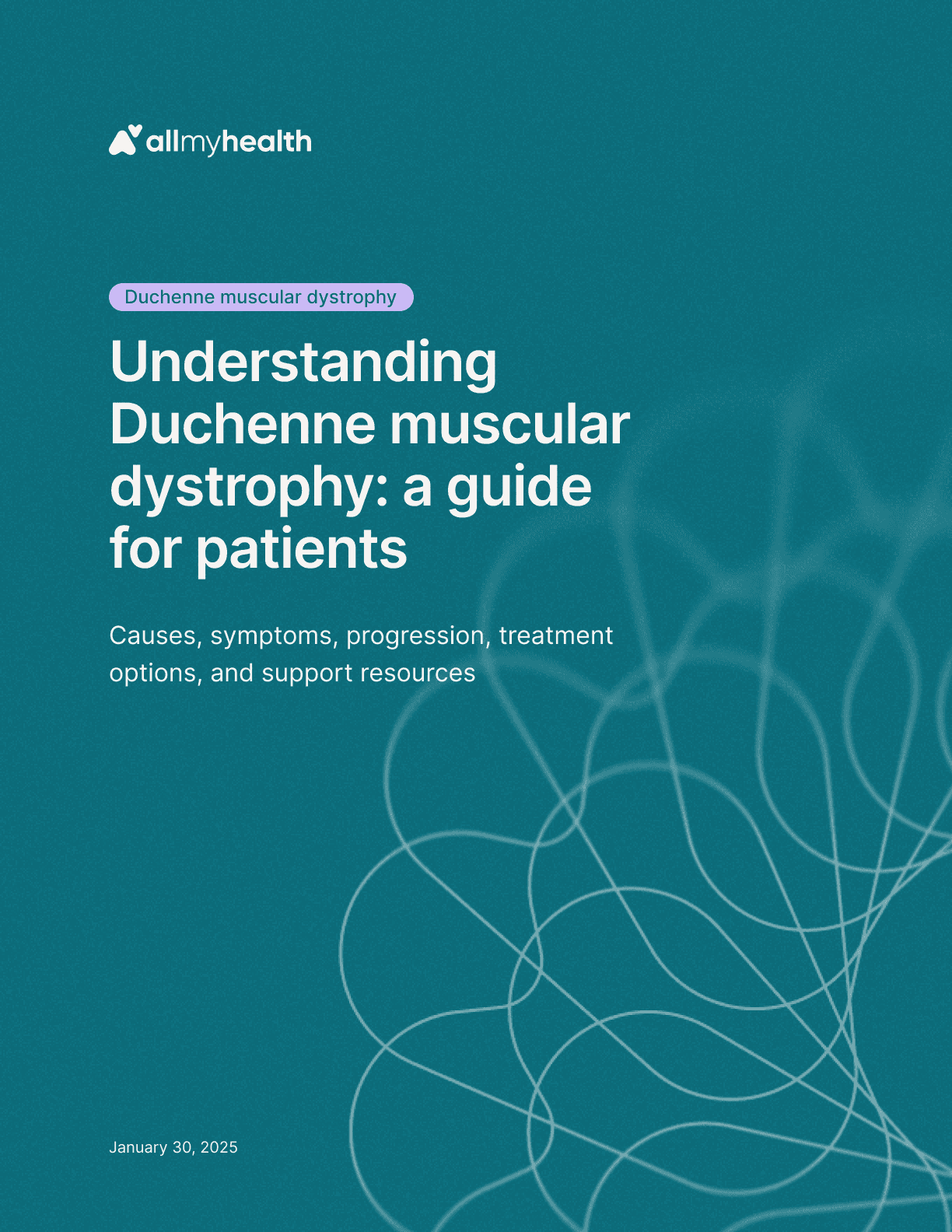
Duchenne muscular dystrophy
·
Understanding Duchenne muscular dystrophy: a guide for patients
Jan 30, 2025
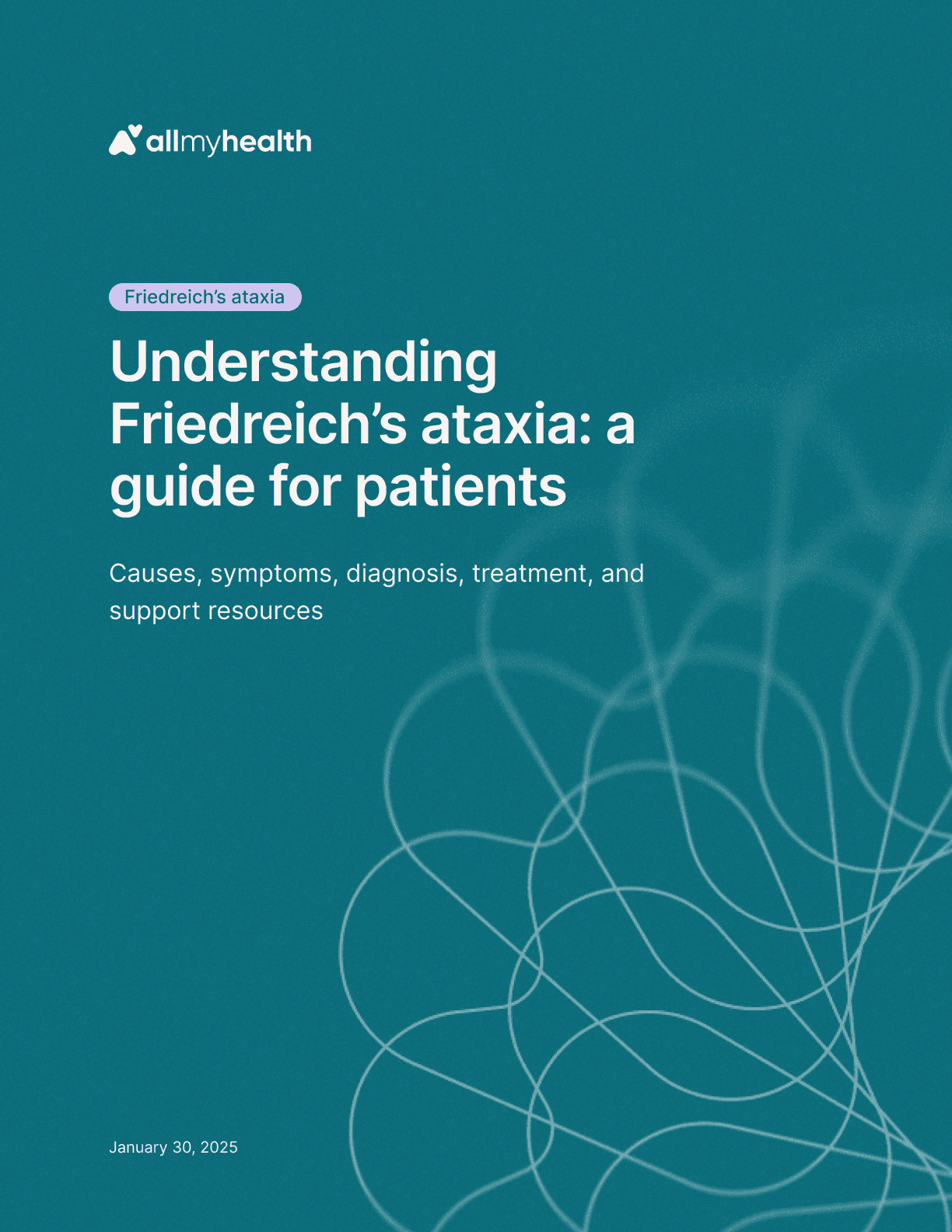
Friedreich's ataxia
·
Understanding Friedreich's ataxia: a guide for patients
Jan 30, 2025

Hemophilia
·
Understanding hemophilia: a guide for patients
Jan 30, 2025
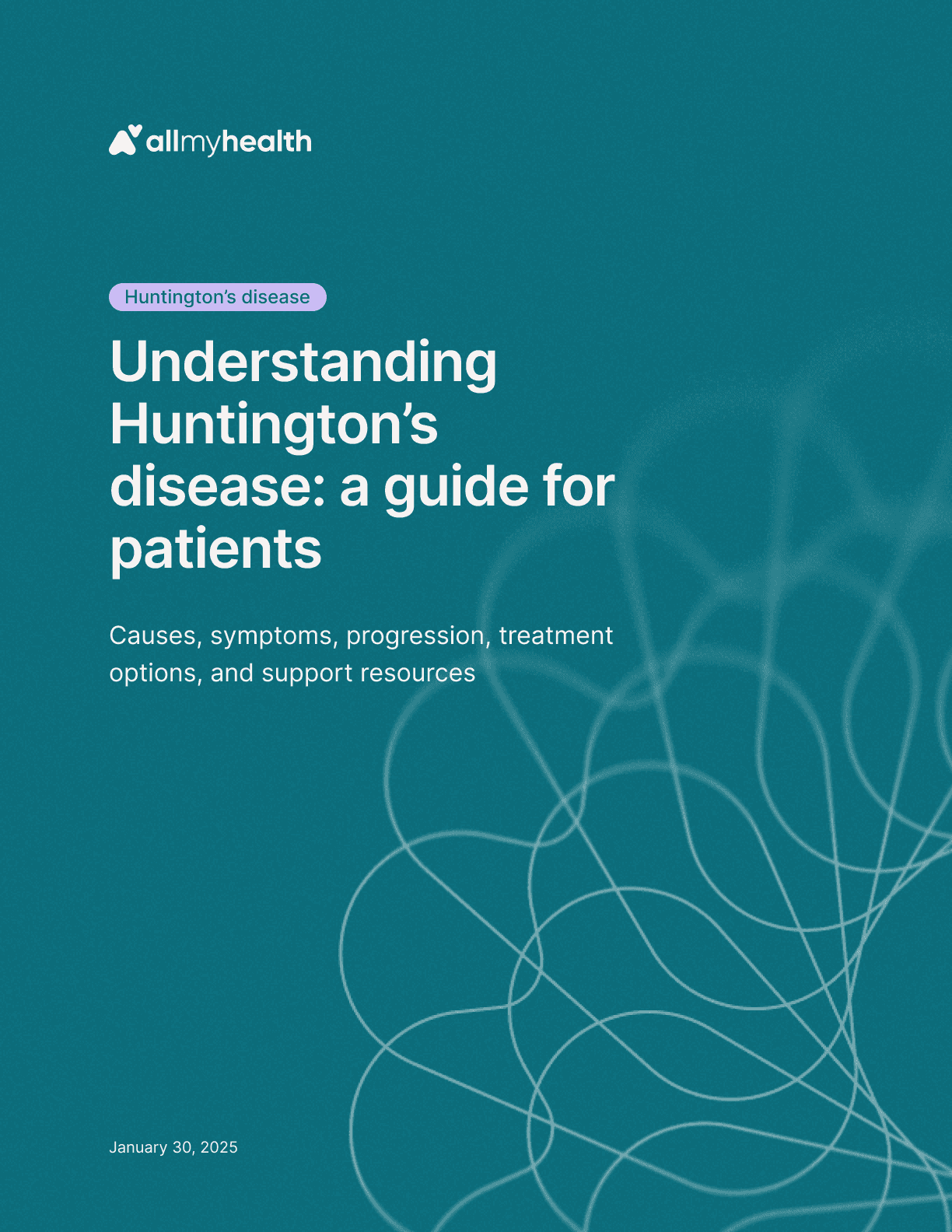
Huntington's disease
·
Understanding Huntington’s disease: a guide for patients
Jan 30, 2025
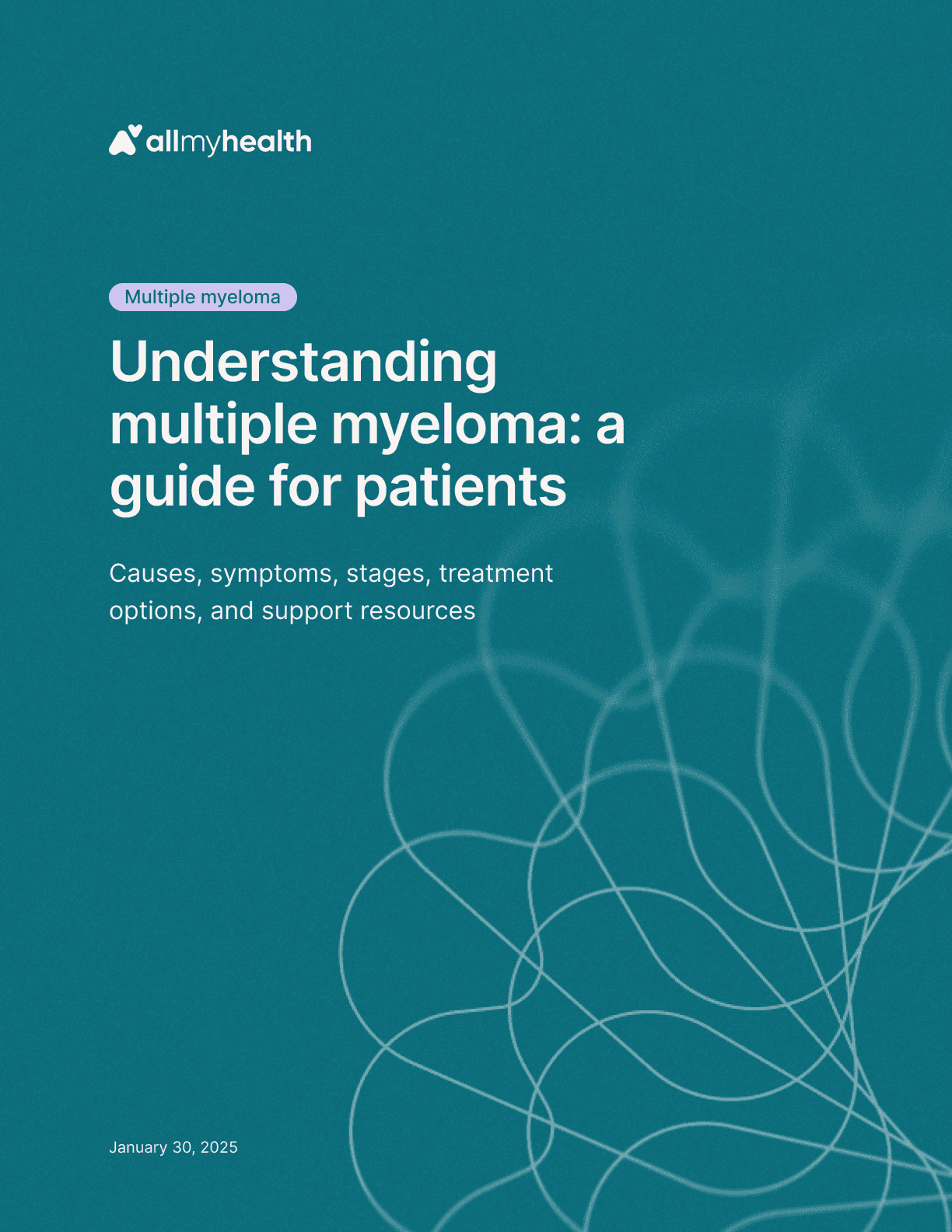
Multiple myeloma
·
Understanding multiple myeloma: a guide for patients
Jan 30, 2025

Primary biliary cholangitis
·
Understanding primary biliary cholangitis: a guide for patients
Jan 30, 2025
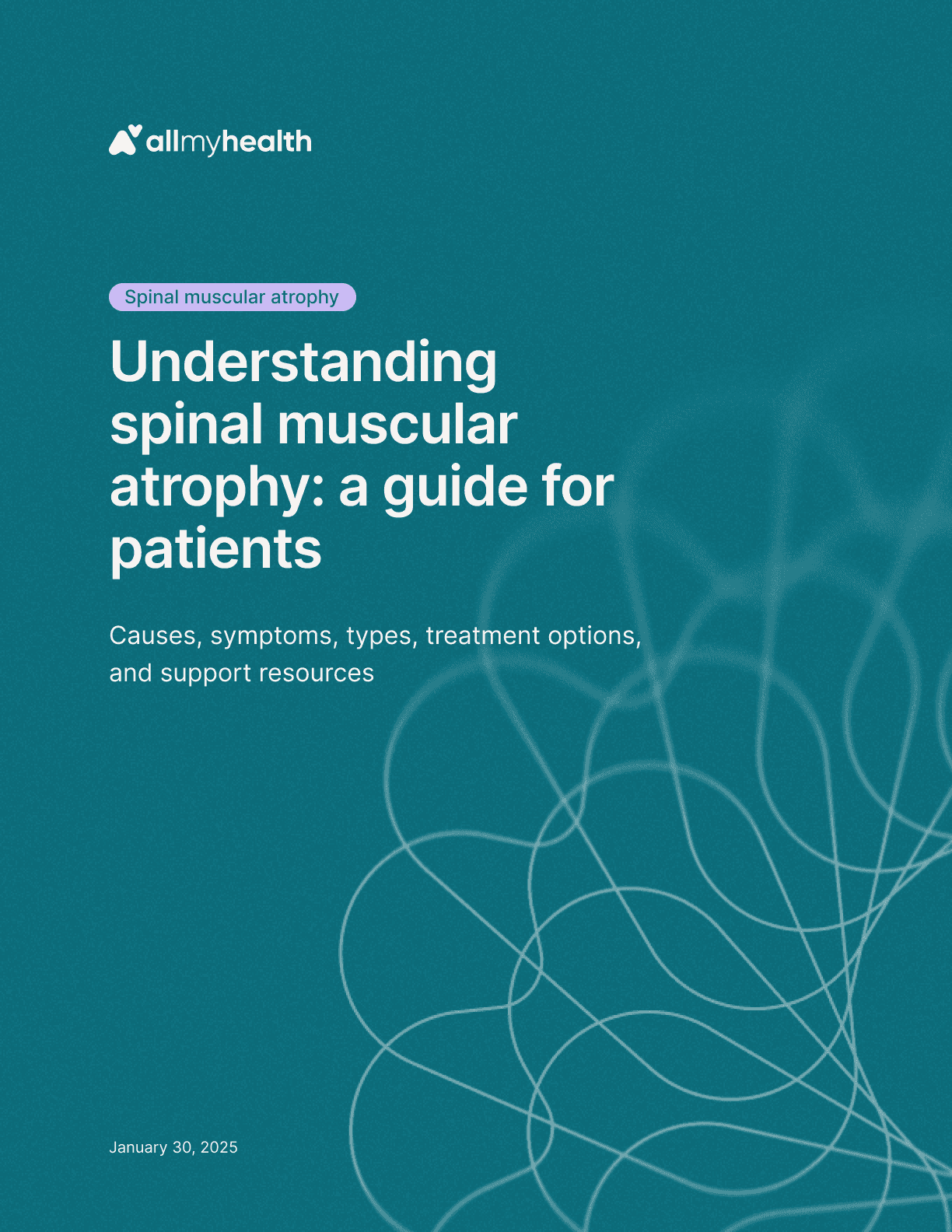
Spinal muscular atrophy
·
Understanding spinal muscular atrophy: a guide for patients
Jan 30, 2025

Amyotrophic lateral sclerosis
·
Understanding amyotrophic lateral sclerosis: a guide for patients
Jan 23, 2025
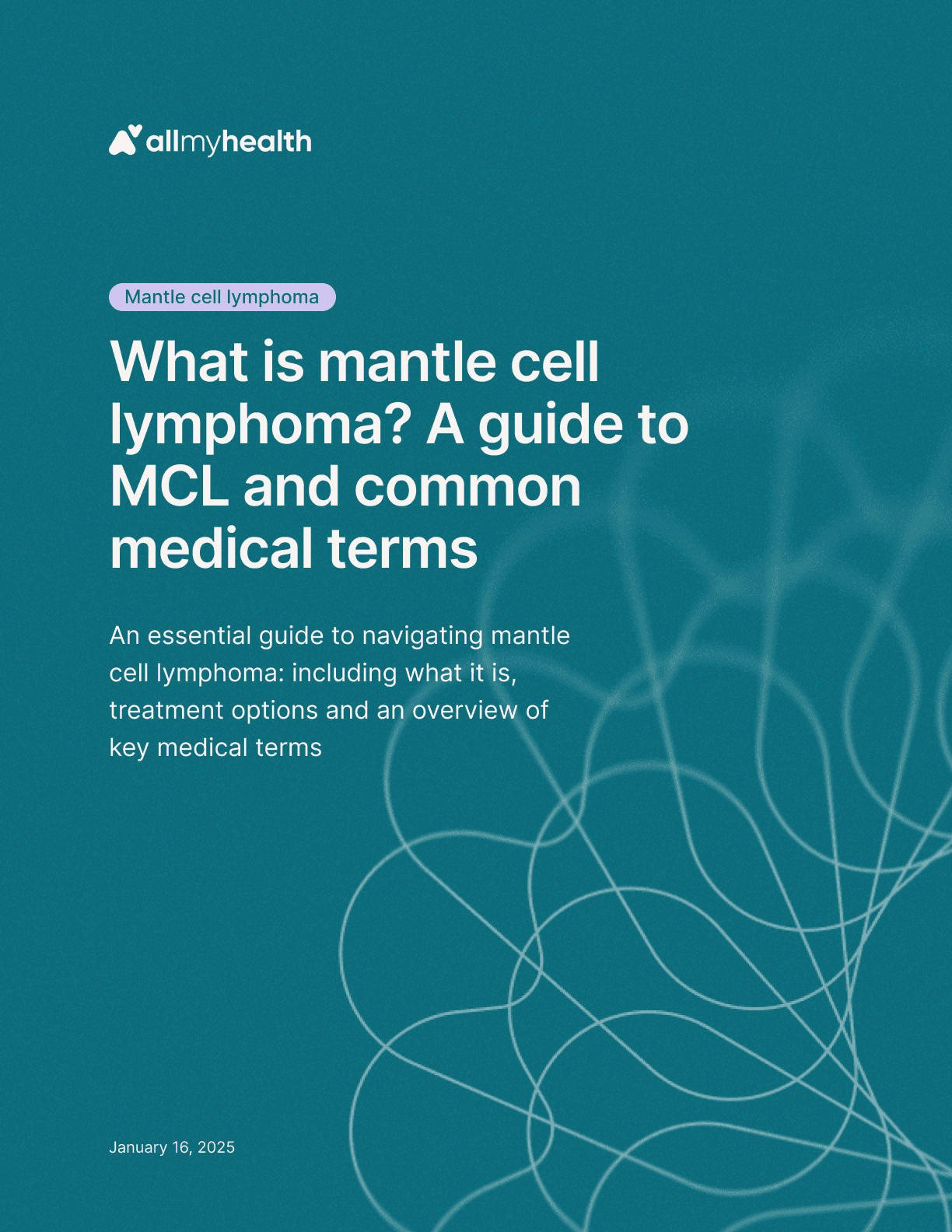
Mantle cell lymphoma
·
What is mantle cell lymphoma? A guide to MCL and common medical terms
Jan 23, 2025
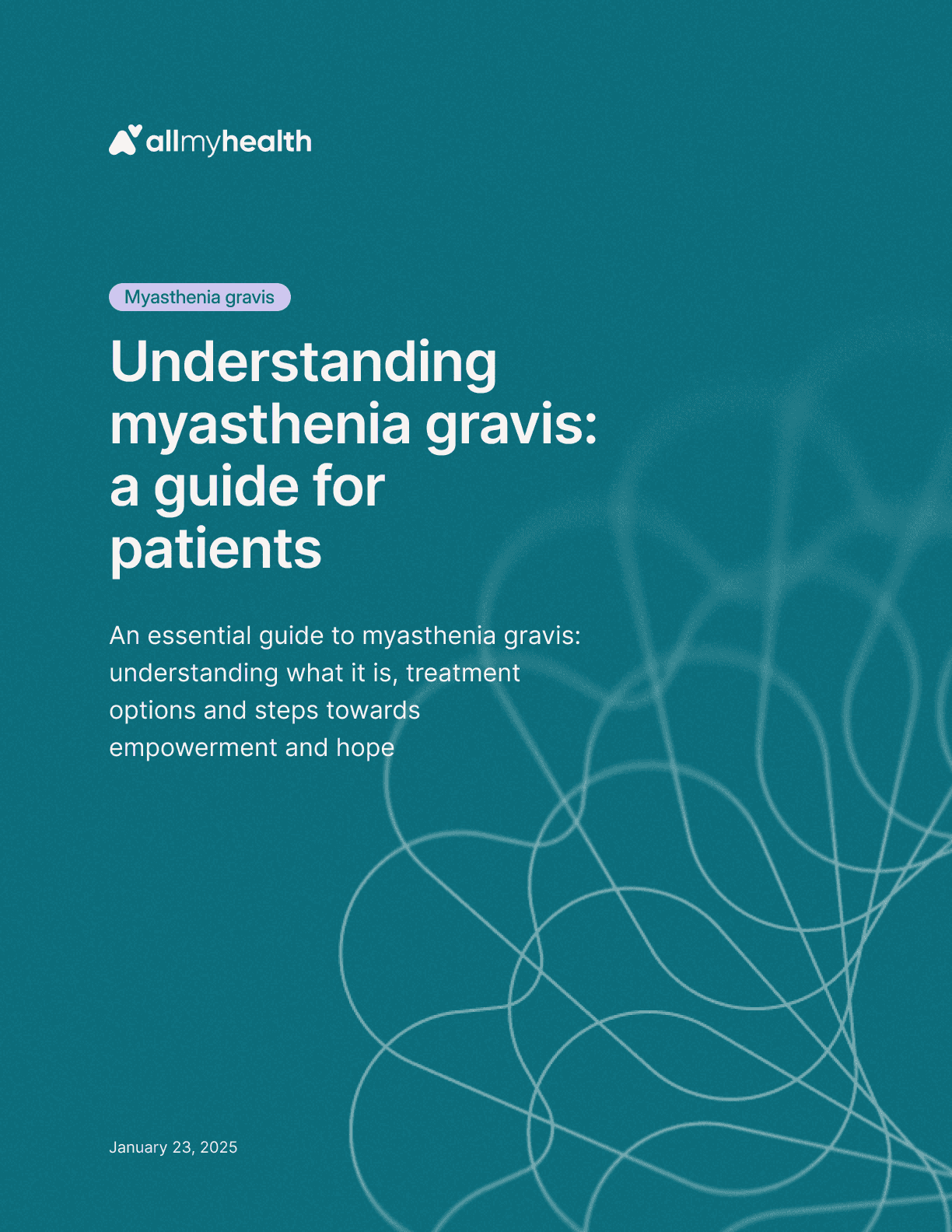
Myasthenia gravis
·
Understanding myasthenia gravis: a guide for patients
Jan 23, 2025
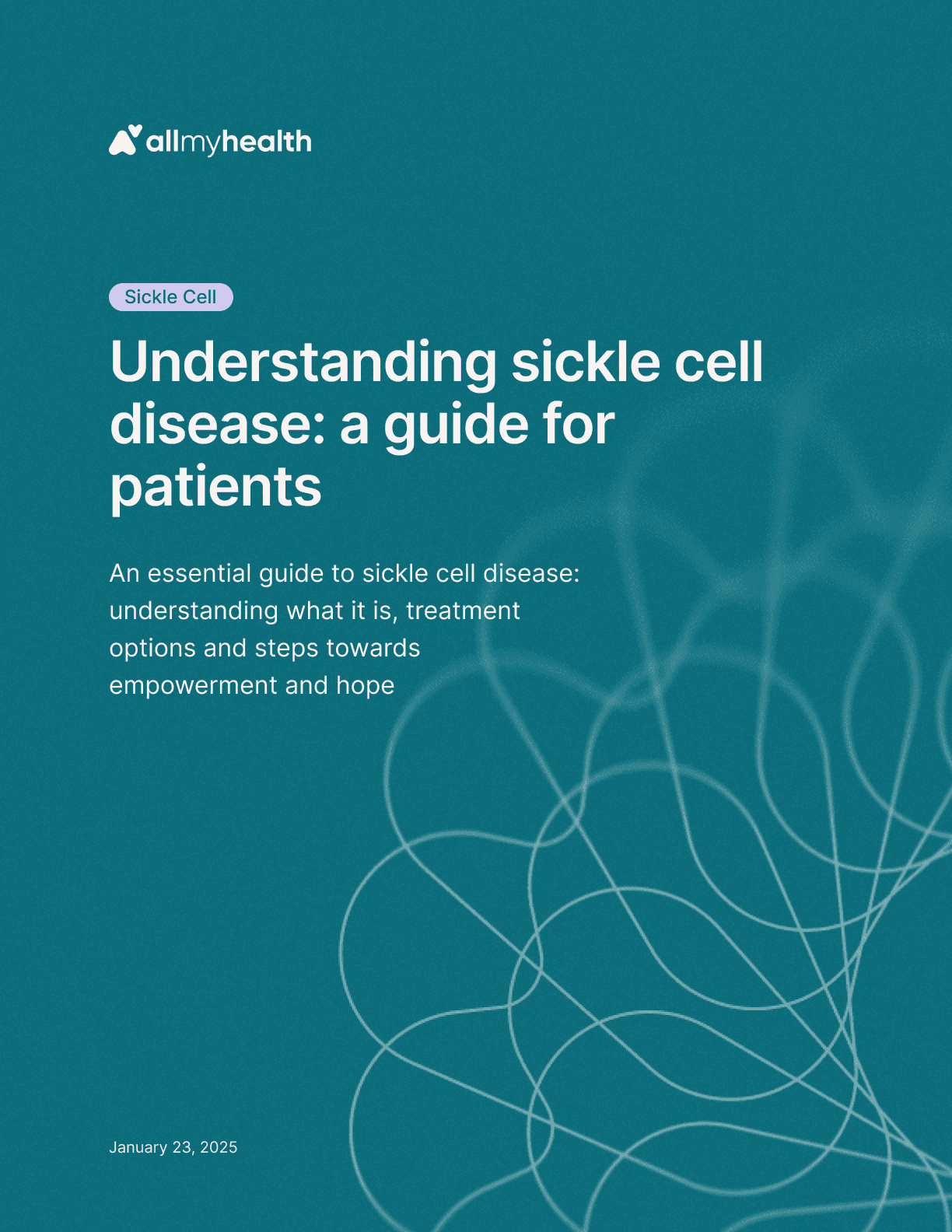
Sickle cell
·
Understanding sickle cell disease: a guide for patients
Jan 23, 2025
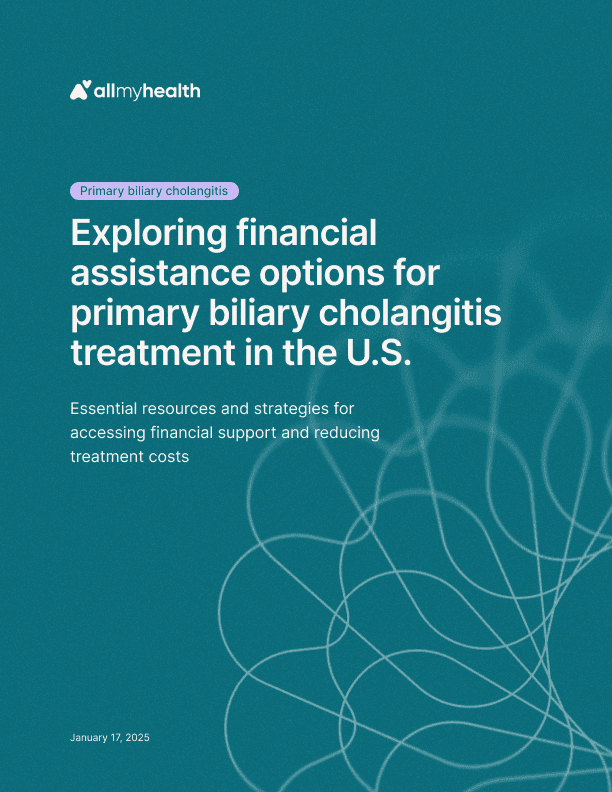
Primary biliary cholangitis
·
Exploring financial assistance options for primary biliary cholangitis treatment in the U.S.
Jan 17, 2025
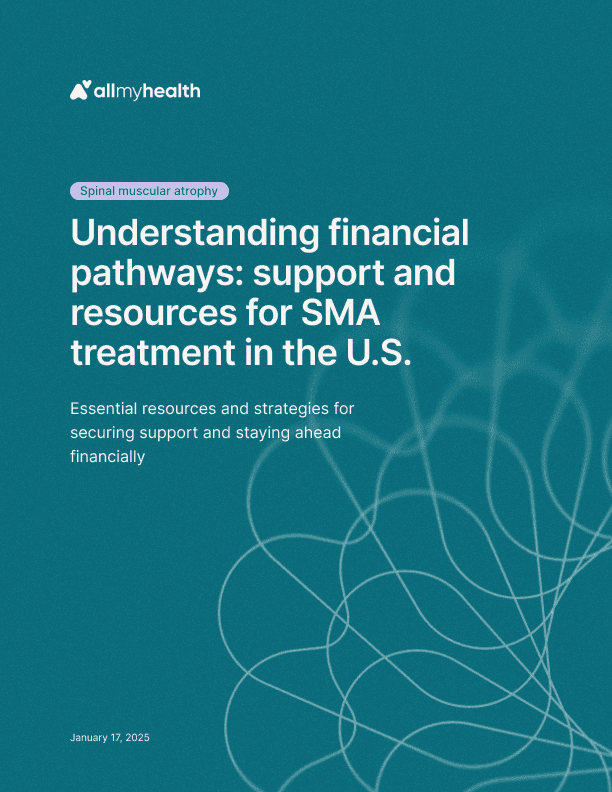
Spinal muscular atrophy
·
Understanding financial pathways: support and resources for SMA treatment in the U.S.
Jan 17, 2025
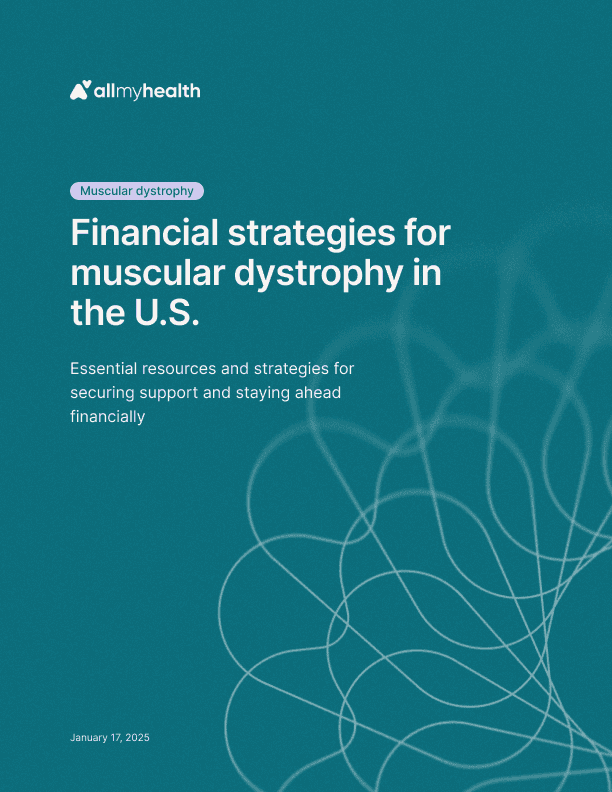
Duchenne muscular dystrophy
·
Financial strategies for muscular dystrophy in the U.S.
Jan 17, 2025

Hemophilia
·
Navigating financial assistance for hemophilia treatment in the U.S.
Jan 17, 2025
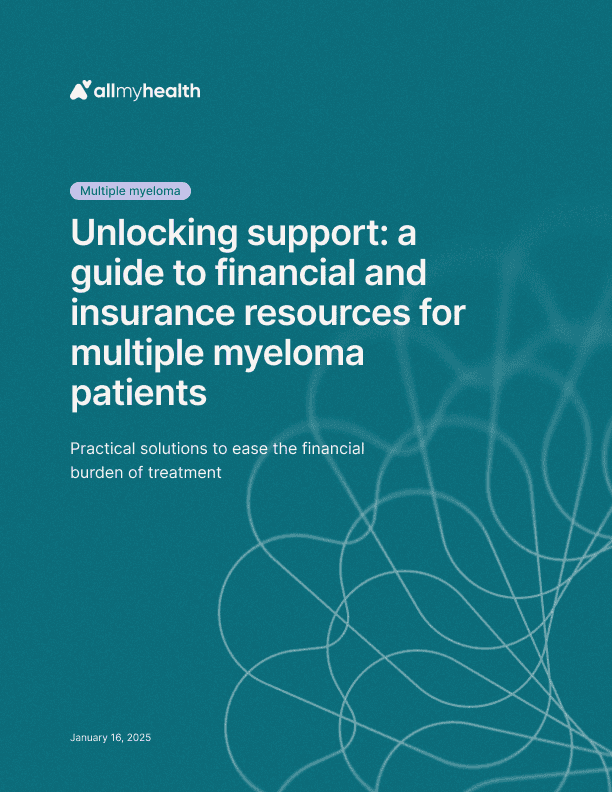
Multiple myeloma
·
Unlocking support: a guide to financial and insurance resources for multiple myeloma patients
Jan 17, 2025
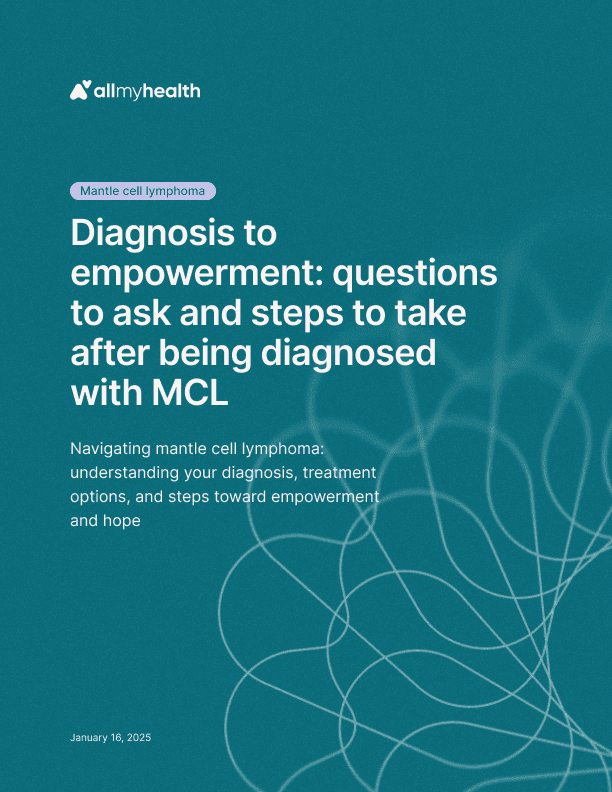
Mantle cell lymphoma
·
Diagnosis to empowerment: questions to ask and steps to take after being diagnosed with MCL
Jan 16, 2025
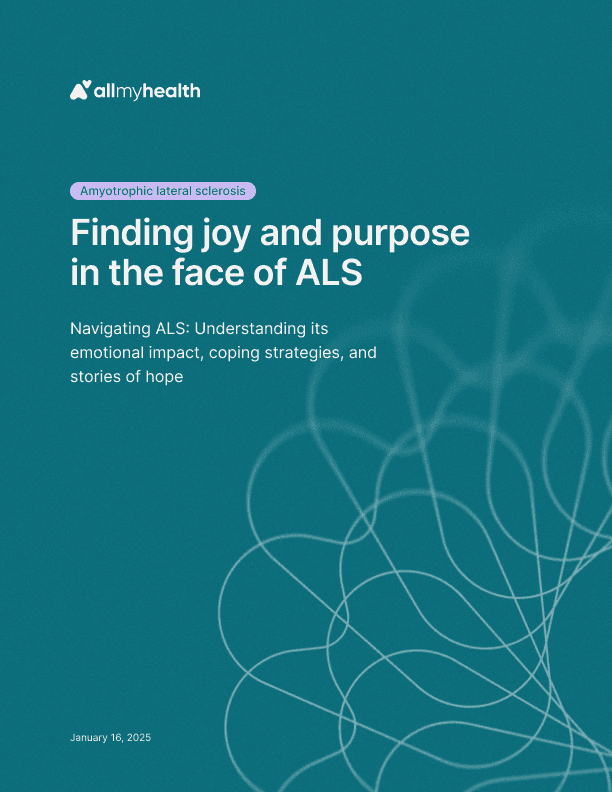
Amyotrophic lateral sclerosis
·
Finding joy and purpose in the face of ALS
Jan 16, 2025
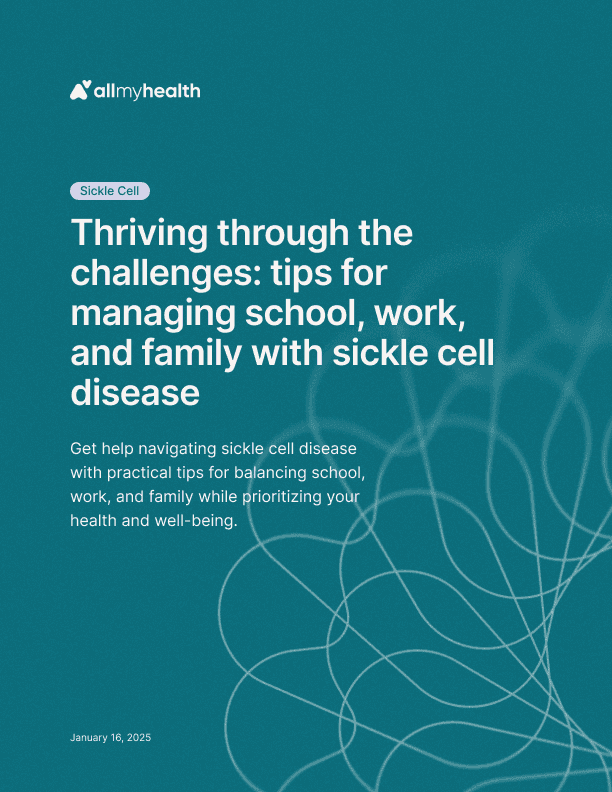
Sickle cell
·
Thriving through the challenges: tips for managing school, work, and family with sickle cell disease
Jan 16, 2025
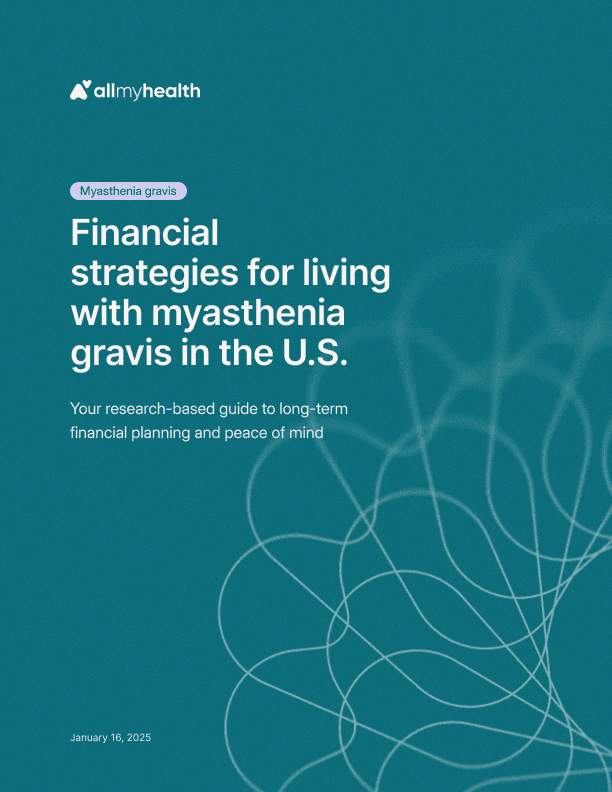
Myasthenia gravis
·
Financial strategies for living with myasthenia gravis in the U.S.: a guide to long-term planning
Jan 16, 2025